

















































A supplement to Charleston Regional Business Journal, Columbia Regional Business Report and GSA Business Report
Why South Carolina is on the fast track to being the electric vehicle ‘Battery Belt’ 5 Questions With GADC’s Mark Farris Junior Achievement Hall of Fame honorees SCBIZMAG.COM MARCH/APRIL 2023
Power Surge
rapidly scale Estelle Colored Glass thanks to the relationship I have with SouthState Bank. Without their guidance and belief in me, my product offerings would likely not be as widely available as they are today.”
SouthState Bank takes great pride in serving local businesses, ensuring they have the tools, guidance and security they need to reach their unique goals.

2 www.scbizmag.com Member FDIC
“I was able to
Stephanie Hall Founder Estelle Colored Glass
Sure, the meeting room chairs roll. But you’ll be spending a lot more time in seats with real M Power. Bring your team to the BMW Performance Center in South Carolina. We’ll customize a day suited to your needs. Delicious catering options, pro driving instructors, a closed course and a fleet of powerful BMWs await. Your team will be all smiles, even in the meeting rooms.
Call 888-345-4269 to book an event or visit BMWPerformanceCenter.com for more information.


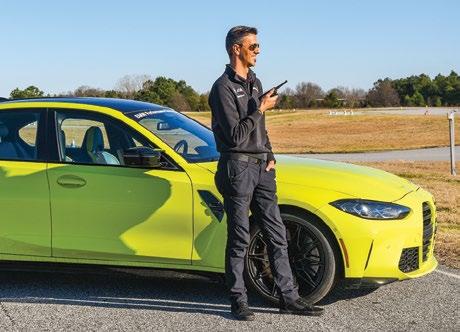
MOST
ALL OUR SEATS HAVE WHEELS.
HAVE 503 HORSEPOWER.
©2023 BMW of North America, LLC. The BMW name, model names and logo are registered trademarks.
TABLE OF CONTENTS
SCBIZ EDITORIAL TEAM
Jason Thomas, executive editor jthomas@scbiznews.com • 864.568.7570
Ross Norton, managing editor - content rnorton@scbiznews.com • 864.720.1222
Andrew Sprague, managing editor - production asprague@scbiznews.com • 843.804.6104
Christina Lee Knauss, staff writer cknauss@scbiznews.com • 803.753.4327
Krys Merryman, staff writer kmerryman@scbiznews.com • 864.640.4418
Steve McDaniel, editor, Custom Publishing Division smcdaniel@scbiznews.com • 843.849.3121
SCBIZ ADVERTISING DEPARTMENT
Ryan Downing, director of sales rdowning@scbiznews.com • 864.720.1221
Amanda Alford, multimedia account executive aalford@bridgetowermedia.com • 864.720.1223
Shannon Pollard, multimedia account executive spollard@scbiznews.com • 843.804.6094
Tony Rossi, multimedia account executive trossi@scbiznews.com • 864-201-9501

Jim Wheeler, multimedia account executive jwheeler@scbiznews.com • 843.849.3104
SCBIZ EVENTS DEPARTMENT
Kim McManus, events manager kmcmanus@scbiznews.com • 843.849.3116
Lauren Medders, event manager/manufacturing conference lmedders@scbiznews.com • 864.720.1220
South Carolina’s Media Engine for Economic Growth

ACCOUNTING ar@bridgetowermedia.com
SUBSCRIPTION SERVICES service@bridgetowermedia.com • 877.615.9536
BATTERY
TEACHING TECH
CU-ICAR’s innovate role in EV



BOOMING
HYDROGEN
HIGH
FROM TESLA

WITH
Mailing address: 3265 North Carolina Ave., Suite 101 North Charleston, SC 29405 Phone: 843.849.3100
www.scbiznews.com
BridgeTower Media

4 www.scbizmag.com
The entire contents of this newspaper are copyright by BridgeTower Media with all rights reserved. Any reproduction or use of the content within this publication without permission is prohibited. SCBIZ and South Carolina’s Media Engine for Economic Growth are registered in the U.S. Patent and Trademark O ice. BELT
EV manufacturing on the rise in SC Page 11
LOVE
Page 14
BMW
The backstory behind South Carolina’s largest-ever economic development deal Page 24
Behind BMW’s production uptick Page 19
Bosch fuels alternative power Page 21
FOCUS INTRODUCTION ........................................................ Page 10
SUBSCRIPTION INFORMATION

SCBIZ reaches thousands of South Carolina’s top decision-makers. Add your name to the list by ordering a print subscription to SCBIZ. Your subscription also includes SCBIZ Daily. Delivered to your e-mail inbox each weekday morning, SCBIZ Daily is your link to statewide business news. One year for $67 or two years for $97.





5 www.scbizmag.com
Subscribe or change your address online at www.scbiznews.com or call
IT’S ELECTRIC South Carolina automotive industry stats Page 8 SC DELIVERS SC Ports experiences record 2022
INDUSTRY PERSPECTIVE Andi Rawl on SC’s ‘EV’olution Page 9 5 QUESTIONS WITH Mark Farris on the auto industry Page 54 Information Technology firms
49 Page 28 2023 SOUTH CAROLINA BUSINESS Hall of Fame
877.615.9536.
Page 47
Page
Seeing the light on electric vehicles
Acouple of months ago I had the pleasure of spending $5,000 to replace the transmission in my 2014 Ford Escape. Less than 85,000 miles and it went kaput. And the mechanic couldn’t offer an explanation as to why, other than a shrug.




It marked the first time that I started to ask myself: what about an electric vehicle? (OK, it took some prodding from a co-worker, a Prius disciple, no less, to get me thinking about a non-gas powered automobile). The seed had been planted.




Turns out I’m not alone. From 2020 to 2021, electric vehicle ownership in South Carolina increased by 70%. Admittedly, I am seeing a lot more Teslas on the roads here in the Upstate. Not that I could afford one of those.
South Carolina has found a niche with the electric vehicle industry. So much so that leaders are referring to The Palmetto State as the ‘Battery Belt.’ The state is certainly making a name for itself in electric vehicle and EV battery manufacturing. Since 2017, over $9.6 billion has been invested in the sector.
The spurt in EV action is why we made it the focus of this issue’s automotive theme. It’s undoubtedly the future, which why state leaders, including Gov. Henry McMaster, who recently announced the creation of the state’s first website de-



voted to the electric vehicle industry, are all in.
In addition to the five stories in the focus section about electric vehicles – and another form of alternative fuel, hydrogen – you’ll find thought pieces from Andi Rawl, executive director of the SC Automotive Council, who touts the state’s “EV”olution, and Greenville Area Development Corp. president and CEO Mark Farris, about the economic impact of the auto industry in the Upstate — and all of South Carolina.
So buckle up, it’s going to be a fun ride. Does anyone happen to have $5,000 I can borrow, by the way?
Jason Thomas is the executive editor of SC Biz News. Reach him via email at jthomas@ scbiznews.com.























The annual exposition will run concurrently with all other conference events. The expo sets up on approximately three football fields of space and conference attendees must walk through the show floor to get to all other events, ensuring maximum traffic for exhibitors.

6 www.scbizmag.com
LETTER FROM THE EDITOR 2023 | SOUTH CAROLINA MA NUFACTURING CONFERENCE AND EX PO GREENVILLE CONVENTION CENTER | GREENVILLE, SC NOVEMBER 9-10 DON’T MISS OUT, RESERVE YOUR HIGH-TRAFFIC BOOTH TODAY!
BOOTH PACKAGES INCLUDE: FOR MORE INFORMATION, VISIT WWW.SCMANUFACTURINGCONFERENCE.COM/EXHIBITOR-INFO/ ☑ 10x10 booth ☑ Entry for 2 to Welcome Cocktail Reception ☑ Attendee List with Contact Information ☑ 25% Discount on Breakfast/Lunch Conference Sessions ☑ Free Entry for Booth Staff to Exhibit Hall Including: • 2,000+ Attendees • 20+ Speakers Including SC Gov. Henry McMaster • 215 Exhibitors
MOST
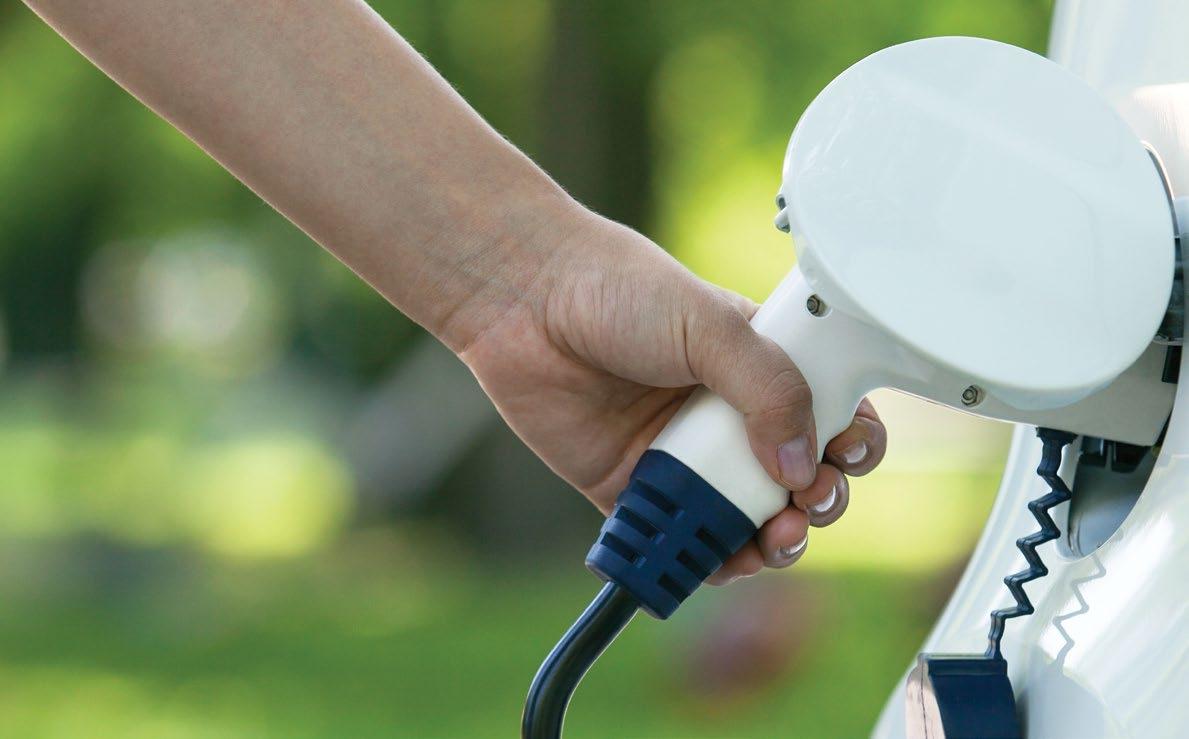
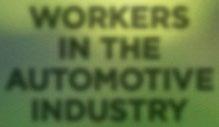














7 www.scbizmag.com WORKERS IN THE AUTOMOTIVE INDUSTRY 75,000 AUTOMOTIVE INDUSTRY ECONOMIC IMPACT $27 BILLION AUTOMOTIVE INDUSTRY IN SOUTH CAROLINA LEADING OFF Smart. Easy. Flexible. College savings that works for your family. Administered by State Treasurer Curtis Loftis. To learn more about Future Scholar and its investment objectives, risks and costs, read the official statement available at FutureScholar.com before investing. Check with your or the beneficiary’s home state to learn if it offers tax or other benefits for investing in its own 529. Not paid for with state funds. See how you can start saving online with any amount at FutureScholar.com South Carolina’s 529 college savings plan is designed to grow with your child, giving them the flexibility to follow their dreams while delivering tax savings for you.











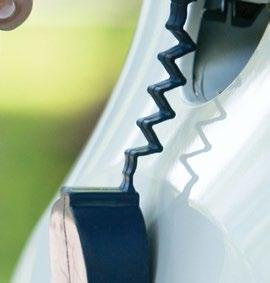





HYDROGEN STATIONS COMPANIES 0 1 Nearly 500 LEADING OFF STATE RANK ELECTRIC VEHICLE CHARGING STATIONS IN SOUTH CAROLINA IN 2007 28 Wxx ELECTRIC VEHICLE SUPPLY EQUIPMENT PORTS 952 ELECTRIC VEHICLE CHARGING STATION LOCATIONS 392
The inside track on South Carolina’s auto ‘EV’olution

The automotive industry in South Carolina has undergone significant evolution in recent decades, turning the state into a hub for automotive manufacturing and innovation. From the early days of assembly plants to the modern era of advanced technology and robotics, the South Carolina automotive industry has continuously adapted to changing market demands and technological advancements.
Most South Carolinians probably have no idea that our state was home to the first automotive manufacturing companies in the Southeast. In Rock Hill, a little over a century ago, the Anderson Motor Company produced the “Anderson” automobile. The company originally produced carriages, but the owner, John Gary Anderson, saw an opportunity to utilize its technology to produce a different mode of transportation and create one of the first luxury automobiles on the market.
Anderson’s foresight in shifting his existing technology production process to make vehicles that could rival the Ford Model T was a revolutionary idea at the time. The company was successful and produced over 7,000 vehicles during its operation, but the economic challenges of the 1920s were too much to keep the company afloat.
But that wasn’t the end of the story for automotive manufacturing in South Carolina and what it would evolve into and create. Today, the Palmetto State is an automotive powerhouse whose economic impact exceeds $27 billion thanks to over 500 companies that employ more than 80,000 individuals. Each time an automotive manufacturer announces an investment in our state, it creates a ripple effect across multiple communities, spurring even more job creation. Our world-class academic and research institutions that develop a skilled workforce are key to driving this growth.
The South Carolina Technical College System, 4-year Universities, and research institutions such as the Clemson University –International Center for Automotive Research (CU-ICAR) have and continue to play a critical role in supporting the automotive industry. As technology evolves, so do the colleges. That is why household names such as BMW, Bosch, Bridgestone, Continental, Giti Tire, Mercedes-Benz Vans, Michelin North America, Oshkosh, Volvo, and so many more call South Carolina home.
Our “Team SC” collaborative spirit has enabled our education system to work directly with industry professionals to develop new technologies, upskill the workforce, and further advance the automotive industry. With major changes on the horizon, our education system and the state’s collaborative spirit will continue its mission-critical role in supporting the automotive industry’s next technology evolution.
The electric vehicle revolution has begun, and South Carolina’s automotive sector is once again at the forefront of this market change. Recently, there have been major announcements around the electrification of the automotive industry in South Carolina. Envision AESC announced an investment of $810 million in Florence County to build a gigafactory to produce its electric vehicle technology. Redwood Materials announced an investment of $3.5 billion in Berkeley County to handle its closed-loop battery life cycle technology. BMW announced a $1.7 billion investment to support its production of electric vehicles. Other state OEMs (original equipment manufacturers), Mercedes-Benz Vans, Oshkosh, and Volvo, are currently implementing production shifts to produce electric vehicles, and suppliers are adopting new processes that will make their products compatible with these new models.
The evolution of the South Carolina automotive industry has been a remarkable journey, showing no signs of slowing down. The state’s favorable business environment and skilled workforce continue to attract major automotive investments, and the industry’s focus on advanced technologies will ensure its future growth and success. As the South Carolina automotive industry’s evolution continues, it will play a critical role in driving the state’s economic growth and shaping the future of the global automotive industry.
9 www.scbizmag.com INDUSTRY PERSPECTIVE
Andrea “Andi” Rawl, IOM, is the executive director of the SC Automotive Council under the South Carolina Manufacturers Alliance. Learn more by visiting myscma.com.
Andi Rawl
AUTO INDUSTRY
The investment in South Carolina’s automotive industry as of late has been, ahem, pardon the pun, electric.
In December alone, nearly $4.5 billion in electric vehicle batteryrelated projects were announced for South Carolina. Since 2017, $9.6 billion in EV automotive capital investment has come to the Palmetto State.
So much EV investment is flowing in that South Carolina has been dubbed the Battery Belt.
You can read more about South Carolina’s automotive electrification on the following pages.
The big headliner is Redwood Materials, a Nevada-based lithium and ion battery recycler and component manufacturer. The company in December announced a $3.5 billion investment in Berkeley County that will create over 1,500 jobs — only the largest economic development announcement in South Carolina history.

Oh, and the co-founder of Redwood also is the co-founder of a
little electric vehicle company you may have heard about: Tesla.
Other big-name companies have also entered the fray, including BMW Group, which is making way for electric vehicle production by investing another $1.7 billion to expand its operations in the Upstate.
The surge in electric vehicle-related projects is fueling South Carolina’s automotive industry, which has an annual economic impact of $27 billion and employs over 75,000 people.
Time to get plugged in.
FOCUS Clemson University
SOUTH CAROLINA LAYING EV GROUNDWORK ................................... Page 11 CU-ICAR PREPARING FUTURE EV WORKFORCE ................................. Page 14 BMW CONTINUES TO ACCELERATE GROWTH Page 19 WHY BOSCH IS HIGH ON HYDROGEN .......................................................... Page 21 BEHIND REDWOOD’S HISTORIC PROJECT ......................................................... Page 24
CHARGING TOWARD INNOVATION
How the South Carolina Electric Vehicle Stakeholder Initiative aims to cement The Palmetto State as the ‘Battery Belt’
 By Christina Lee Knauss cknauss@scbiznews.com
By Christina Lee Knauss cknauss@scbiznews.com
The evidence is clear: South Carolina is quickly emerging into a powerhouse in the nation’s burgeoning electric vehicle industry. Every month, new projects related to EVs are announced in the Palmetto state, involving building vehicles themselves and EV technology, especially batteries. Industry leaders are calling the state part of the nation’s rapidly growing “battery belt.”
In December alone, two battery projects with huge economic impact for the state were announced: the $810 million Envision AESC battery cell gigafactory in Florence County and the $3.5 billion investment by Redwood Materials to
produce anode and cathode EV battery components in Berkeley County, the largest economic project in state history. Redwood’s founder, JB Straubel, is the former chief tech officer and co-founder of Tesla.
Each day seems to bring a new milestone in the industry, including Proterra recently building its first EV battery at its Greer plant and BMW starting production on the BMW XM at its Spartanburg County plant. Not to mention Volvo building its next generation fully-electric EX90 SUV this year at its Charleston plant.
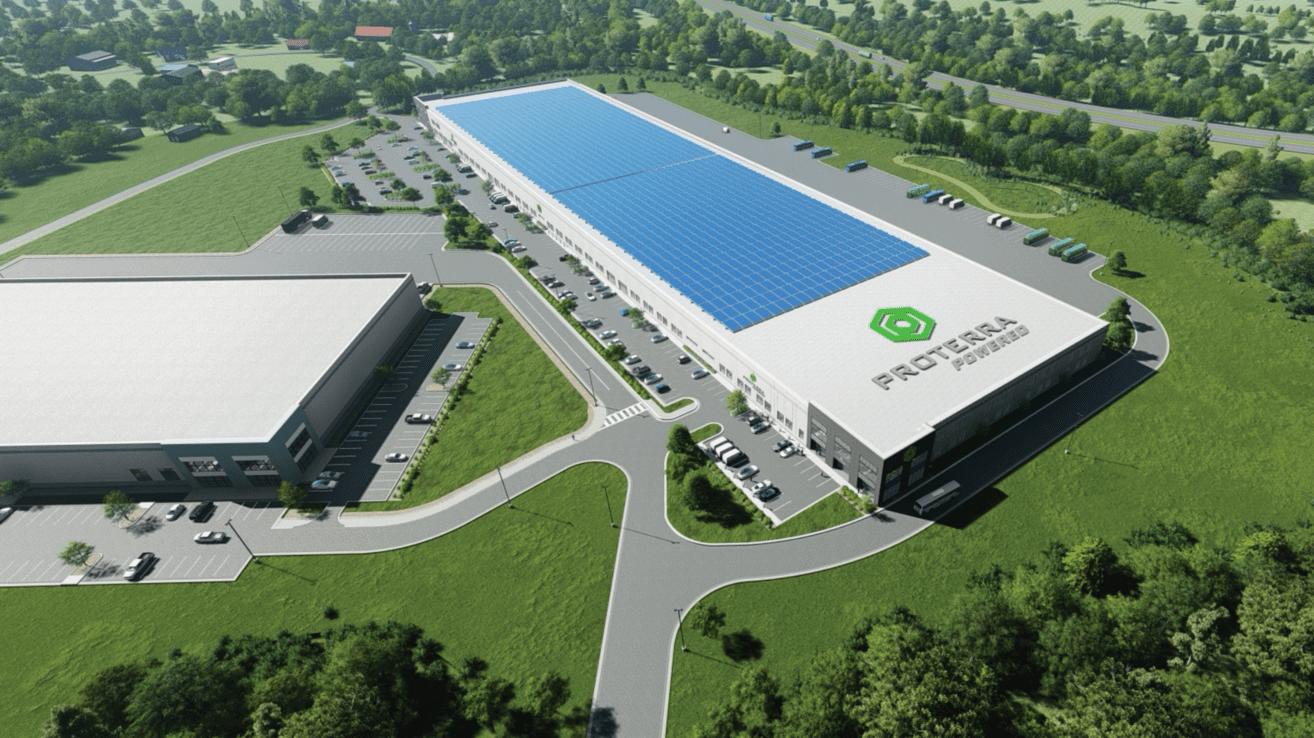
Negotiating all this change might seem daunting, but a document called the South Carolina Electric Vehicle Stakeholder Initiative aims to help streamline the conversion to EV technology for state residents at all levels.
Released in the fall of 2022 by the state’s Energy Office, the Initiative is the result of more than 18 months of collaboration among more than 350 diverse stakeholders in the state’s EV future, representing the EV industry and other businesses, utility companies, local and regional governments, community and environmental organizations and individual residents.
Participants included officials from electric vehicle manufacturers and supply chain companies such as Volvo Cars, Arrival, Thomas Built Buses and Proterra, charging station providers such as ABB Inc. and Siemens eMobility, representatives from utilities including Santee Cooper, Dominion Energy and many electric cooperatives, and higher education including Clemson University, the Uni-
11 www.scbizmag.com
In December, Proterra announced it would build a $76 million facility in Greer, which recently produced its first EV battery. (Rendering/Provided)
versity of South Carolina and Greenville Technical College.
The Energy Office contracted with Duke University’s Nicholas Institute for Environmental Policy Solutions to compile the initiative, which launched in November 2020. Guided by a diverse advisory committee, stakeholders met both remotely because of the pandemic and in person, and a statewide survey was also held to get a sense of both residents’ attitudes toward EV technology and what would be needed to help launch electric vehicles statewide.
Projects like the Initiative, while challenging and time-consuming, can help states maximize the advantages of the new electric technology, according to officials from the Nicholas Institute.

“Electrifying transportation is a critical step in our nation’s clean energy transition, and states see that electric vehicle deployment can offer substantial economic opportunity,” said Brian Murray, the institute’s interim director and a faculty member at Duke’s Nicholas School for the Environment. “States that want to go faster and further with the EV industry can strengthen their strategies by inviting public input and collaboration in key policy decisions.”
The final report contains recommendations that range from ramping up statewide awareness efforts to the development of a statewide electrification roadmap. The goal of all the recommendations, officials say, is to streamline South Carolina’s transition to electric transportation.
Steps are already underway to act on the report’s findings. In December, Gov. Henry McMaster signed an executive order to advance the state’s EV deployment. The order created an interagency working group charged with considering the report’s recommendations.
Sara Bazemore, director of the state’s Energy Office, said her office as well as other state agencies have already started work on specific projects related to EVs. The Energy Office is working

on a statewide EV awareness effort. The South Carolina Department of Commerce, meanwhile, is working on establishing an EV economic development initiative complete with a website that will serve as a resource directory for the industry.
Bazemore said the state’s Department of Employment and Workforce is working on a supply gap analysis to figure out supply chain issues that could effect the EV industry and workforce in the state, and the Department of Transportation has formed a working group about EV issues.
“This report has really been a catalyst for interagency collaboration for South Carolina, and the Energy Office has really enjoyed that cooperation, the excitement and the uptick in activity related to electric vehicles that has resulted from it,” Bazemore said. “We’re looking forward to helping South Carolinians understand and navigate through the upcoming transition to electric vehicles.”
Stakeholders in the effort divided into five working groups to explore five core issues related to electric vehicles: education, outreach and workforce development; equity and accessibility, infrastructure, incentives and financing and public entities.
Here’s a look at some of the most significant recommendations:
Incentives and financing. Surveys consistently show that many drivers nationwide are reluctant to consider adopting electric vehicles because of the cost. The report recommends the creation of incentives and financing to reduce upfront costs for consumers, including rebates, tax incentives, utility incentives and the possible creation of “green banks,” financial institutions designed to accelerate the transition to clean energy. The report also recommends incentives to encourage the electrification of fleets statewide. Reducing barriers to EV availability in the state is also a high priority. “There are a limited number of EV models available in South Carolina,” the report said. “Contributing factors may include the state’s limits on which automakers can sell and service their vehicles in the state, the lack of zero-emission vehicle standards and no dealer transition support.”
Recommendations include developing manufacturer and dealer incentives for EVS, supporting auto dealers’ transition to EVs and incentives for selling used EVs.
Education, outreach and workforce: The rapid influx of EV industries into the state demands a workforce that
12 www.scbizmag.com
FOCUS
Brian Murray
Sarah Bazemore
can build the product. Stakeholders recommend developing and funding a state EV workforce development plan that could include an asset map, industry market survey, a curriculum for EV professionals and increased opportunities for EV-related small businesses. Other recommendations include creating a marketing campaign to increase EV awareness and an online resource hub that would serve as a “one-stop shop” for a variety of audiences, including jobseekers, potential EV owners, dealers and fleet managers.
All this needs to be done, stakeholders said, without alienating or damaging the state’s automotive workforce that produces vehicles with internal combustion engines. “In order for South Carolina to be competitive, the state needs to ramp up training delivery models for the manufacturing sector, dealerships and the installation of charging stations without creating job losses within the current automotive workforce,” the report stated.
Equity and accessibility. The report determined that some of the biggest blocks to EV adoption among low- and moderate-income consumers exist in the vehicles’ costs and barriers to accessing charging stations. Recommendations include working with state and local officials and community groups to reduce barriers to EV ownership and use, building up EV infrastructure at existing and new low- and moderate-income housing, and supporting incentives for electric bike purchases and ride-share programs. “Electric cars and trucks are beyond the financial means for many low and middle income families,” the report stated. “A more inexpensive EV, such as an e-bike, should be available, along with the creation of safe bike lanes.” The report also calls for a plan to make sure that EV charging stations are accessible for EV drivers with disabilities.
Infrastructure. One of the report’s most significant recommendations is to create a Statewide Electrification Roadmap that will help to advance EV
manufacturing and workforce development, infrastructure and sales around the state. According to the report, the roadmap would ideally include goals and targets for state agencies and others involved in deploying the infrastructure and readying the state for continued development of the EV economy. “Currently, there is no state plan for the deployment of EVs and EV infrastructure, nor to attract EV investments,”

the report found. “Many Southeastern states developed EV roadmaps or master plans that set the stage for their state’s EV economic development.” The report recommends expanding the state’s Alternative Fuel Infrastructure Tax Credit, deploying EV infrastructure along critical corridors and making sure multi-unit dwellings and rural areas have adequate access to charging stations.
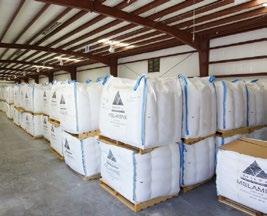

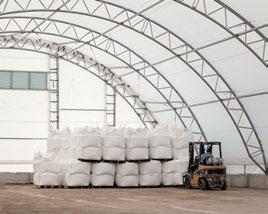
13 www.scbizmag.com FOCUS
FIRSTHAND EXPERIENCE
How the Clemson University International Center for Automotive Research is preparing the next generation of automotive engineers
 By Krys Merryman kmerryman@scbiznews.com
By Krys Merryman kmerryman@scbiznews.com
David Clayton has a front row seat to the rise in electric vehicle manufacturing in South Carolina.
The Greenville native, who has lived in the Upstate nearly his entire life, is executive director of the Clemson University International Center for Automotive Research, and an expert in the advanced manufacturing and mobility industries.
With more than 20 years’ experience in higher education, industry and public service, Clayton has helped create high-wage opportunities for scores
of students while keeping technological advancement at the forefront.
That includes the Deep Orange rapid vehicle prototype program within Clemson University’s two-year master’s degree focused on systems integration in automotive engineering.
It’s all being done at the center, which is a 250-acre advanced-technology research campus founded in 2007 where university, industry and government organizations collaborate.




“What excites me the most about what I do is helping contribute to positive economic development in an area that is close to my heart,” said Clayton, who is also assistant vice president, corporate partnerships and strategic Initiatives at CU-ICAR. “The day-to-day
personal satisfaction in helping create learning opportunities for our students, as students come first, and Deep Orange is a perfect example of giving them an experience unlike any other.”
Clemson students have the opportunity to work with prestigious corporate partners in the automotive industry and learn from them, Clayton added.
“Going from just an idea to a prototype from their own imagination, solving some of the world’s biggest challenges with world-changing technologies and advancements that the auto industry is tackling and to help our students prepare for that is very rewarding,” he said. “This is a great time to be a part of this industry.”
FOCUS 14 www.scbizmag.com
The Clemson University International Center for Automotive Research is located in Greenville.
(Photo/Clemson University)
DEEP DIVE INTO DEEP ORANGE
Deep Orange is a flagship rapid vehicle prototype program within Clemson University’s two-year master’s degree focused on systems integration in automotive engineering. The program provides students with experience in market analysis, target customer profiles, vehicle design, prototyping and manufacturing while balancing costs and design targets in an aggressive timeline.
The innovative vehicle prototype program encourages students to push the boundaries of conventional design and engineering.
866-870-8133

opsourcesta ing.com
STAFFING SIMPLIFIED
We
Traditional Staffing Services


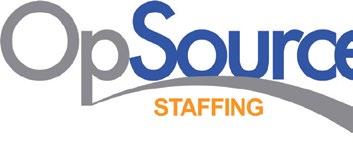

We’ve placed our focus on fulfilling needs for industrial and manufacturing staffing. We place professional workers in positions ideally suited to their experience, skills, and the company’s needs.
Skilled Trades
We have staff dedicated to fulfilling employer needs in the skilled trades market. We also love helping welders, pipefitters, and skilled tradesmen find work.
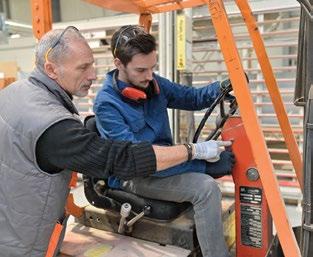
Managed Services
If you are using more temporary employees, our fully integrated managed onsite staffing model can service you from coast to coast.

Anderson, SC | Greenville, SC | Spartanburg, SC | Ga ney, SC | Charleston, SC | Arden, NC Honesty, Integrity, Loyalty, and Servant Leadership. Our #1 focus is you! Traditional Sta ing Services | Skilled Trades | Managed Services | HR Consulting Services CUSTOMIZED STAFFING SOLUTIONS TO MEET YOUR NEEDS WITH AN AGENCY YOU CAN TRUST
HR Lives Connecting Find your Staffing SOLUTIONS at our Locations (864) 489.1703 Gaffney, SC | Office (843) 261.0381 Charleston, SC | Office
and (828) 676.2737 Arden, NC | Office

15 www.scbizmag.com FOCUS
Chris Paredis
David Clayton
Customized
staffing solutions with an agency you can trust, connecting lives for the better trades staffing, direct hiring, and HR consulting.
OpSource Staffing Invests in Your company
for staff or an #1 focus is you. We specialize in taking great people and
them OUR MISSION
searching
finding
can be anywhere you
to
NEED
go
Consulting
We provide experienced HR Consultants to take on the job of managing your employees’ HR needs, while letting your business focus on future success. Consulting Services That’s the OpSource
CU-ICAR represented the Palmetto State at the 2023 Consumer Electronics Show (CES), widely regarded as the world’s largest electronics showcase in Las Vegas in January. This year marks the first time a team from Clemson University received worldwide exposure on the global stage at CES.
While in Las Vegas, 23 Clemson students, faculty and staff debuted a prototype born out of Deep Orange to worldwide industry leaders: Deep Orange 11.

Engineered from scratch by Clemson students, the sustainable-by-design prototype demonstrated circular economy concepts from the vehicle’s creation to its disposal, including novel uses for sustainable and advanced materials, improved recyclability and low-impact operation.

During the Deep Orange program’s entirety, students combined market data with guidance from worldrenowned researchers, skilled staff and global leaders such as ExxonMobil Chemical and Honda to build and validate their design. Throughout the project, industry partners mentored students on engineering practices and subject matter related to developing and integrating technology innovations throughout the education experience.
Chris Paredis, BMW chair in Systems Integration, also served as the program director for the Deep Orange 11 project.
“Students had the opportunity to work closely with industry partners,” said Paredis. “The beauty was partners bring a lot of expertise, and they reached out to other businesses where several other companies provided additional materials as well as providing engineering expertise. We were positioned really well at CES and gained a lot of interest. Students were really excited, and we are proud of their work.”
Paredis, who was involved in the project from start to finish and got to know students personally, said in the end, it’s all about the students and not just about the vehicle product, ensuring they learn and are prepared to apply those skills
and knowledge upon graduation.
“To see all the students at the end of the project employed at great companies is very rewarding,” he added. “All at the cutting edge of the auto industry. All of them commented on their experience and how it translated to what they do in the workplace currently, so as an educator, that gives me a great deal of satisfaction.”
Being a systems engineer in the automotive industry demands a holistic view of the project you are working on, said Paredis.
“The experience, maturity and ‘beyond the classroom’ skills and knowledge that we learned through the Deep Orange process still is helping to this day,” said Piyush Girade, a battery systems engineer at Nikola Corp. in California, who received a bachelor’s degree in mechanical engineering from Clemson and worked on the Deep Orange project. “I believe the Deep Orange program gave us, the new entrants to the automotive industry, a huge head start in our professional careers.”
16 www.scbizmag.com
FOCUS
The Deep Orange program is a flagship rapid vehicle prototype program within Clemson University’s two-year master’s degree program focused on systems integration in automotive engineering. (Photo/ Clemson University)
CU-ICAR offers master’s and doctorate programs in automotive engineering and is conducting leading-edge applied research in critical areas such as advanced product-development strategies, sustainable mobility, intelligent manufacturing systems and advanced materials. (Photo/Clemson University)
Join companies from across South Carolina in the annual Best Places to Work in South Carolina program and let’s all find out together!
Best Places to Work in South Carolina is a researchdriven program from Best Companies Group that examines your company’s practices, programs, and benefits and surveys your employees for their perspectives.


Winners will gather to celebrate their accomplishments at a party unlike any other and will be honored in special editions of SC Biz News publications.
Register Now!
Use

Registration deadline: April 14, 2023

your company one of the best places to work? We want to know! www.BestPlacesToWorkSC.com Presented by www.scbiznews.com Powered by www.bestcompaniesgroup.com
2023 Is
the QR
for participation and registration information 2023
Code
AUTO INDUSTRY REVVING UP
It’s no secret that the automotive manufacturing industry is booming in South Carolina — with major contributions from this Upstate university’s research and technological advancements.
CU-ICAR offers master’s and doctorate programs in automotive engineering and is conducting leading-edge applied research in critical areas such as advanced product-development strategies, sustainable mobility, intelligent manufacturing systems and advanced materials. CUICAR has industrial-scale laboratories and testing equipment in world-class facilities.
On the research front, said Clayton, the U.S. Department of Defense project (Deep Orange 15) has begun, which entails modernizing autonomous (self-driving) military ground vehicles, and hybrid power train tanks and vehicles, which are being built for the U.S. Army.
“We envisioned for this campus to be the public-private partnership it is, and 15 years later we continue that work, so these vehicles can see the light of day,” he said. “People come here and realize what they have access to in the state as a whole, and it’s really a differentiator. To lead the mobility industry is a main part of our mission.”
Another new addition to the campus is the construction of a new industrial Flex Lab for corporate tenants to conduct research and development, engineering, which should be ready for occupancy this spring.
CU-ICAR was the first graduate-level automotive engineering program in the country. It has been recognized for the first Ph.D. graduate in Automotive Engineering, as well as the first female Ph.D. graduate of Automotive Engineering in the U.S., and now offers one of the first automotive engineering undergraduate degrees in the country.
The center is also working on electric vehicles, infrastructure, and battery management to quickly power vehicles, and that kind of research happens at CU-ICAR every day, said Clayton.
“We are always looking for new partners to come grow with us,” said Clayton. “ICAR is an advantage to the community, to help grow the economy and region by drawing international partners to the area. We want the community to come see what we are doing and the amazing things happening here.”
Pivotal in founding Greenville Technical College’s Center for Manufacturing Innovation (CMI), Clayton brought on
corporate partners to fortify the program including GE, KUKA Robotics and Hass Automation, among others. As CMI’s first executive director, he furnished it with state-of-the-art equipment, developed the curriculum for the state’s first fouryear degree from a technical college and built educational collaboration programs between Clemson and the college.
Clayton works closely with industry partners such as Samsung, Bosch and Ford to establish and execute cooperative research projects and academic engagement initiatives.
At nearly 100% occupancy, there are 20 companies at the campus as part of publicprivate partnerships with only around 250 people at the campus that are faculty, staff, and students for Clemson, said Clayton. For example, the North American headquarters for JTEKT is housed at the campus, BMW also has an information technology center there for IT and research development, TTI Group, and Sage Automotive Interiors’ world headquarters.
“The program continues to grow and thrive,” said Clayton. “Students go onto BMW, Bosch, Tesla, and we also started the auto engineering and professional certificates to help undergrads continue their journey into the auto industry.”

FOCUS
Innovation Place at CU-ICAR.
By Ross Norton rnorton@scbiznews.com
BMW Manufacturing is both contracting and expanding. Contracting in that they’re bringing work closer to the assembly plant. Expanding in that they’re spending billions to build the facilities and workforce to do that work closer to the Greer epicenter of the state’s auto manufacturing industry.
BMW Group is making way for electric vehicle production by investing another $1.7 billion to expand its Spartanburg County operations. One billion of that investment will be to expand auto production at its Greer plant. The other $700 million goes to a new battery

EYE TOWARD THE FUTURE
BMW growth continues to accelerate in South Carolina
production facility in Woodruff.
The investment includes a partnership with a Japanese electric vehicle technology company, Envision AESC, which also plans to build an $800 million battery plant in Florence.
Envision AESC has formed a new multi-year partnership with BMW Group to supply the latest innovation battery cells for the global brand’s next generation electric vehicles, according to a BMW news release.
But BMW Group Chairman Oliver Zipse, in Greer in October 2022 to make the announcement, stressed that the new batteries that will power BMW vehicles into the future will be BMW designed and made, not purchased from suppliers.
To support production, Envision AESC
will invest in the new $700 million 30GWh battery manufacturing plant in Woodruff, which will be powered by 100% zero carbon energy, the release stated.
By 2030 BMW Group will build at least six fully electric models in Spartanburg County, Zipse said. "You will not believe how big that factory is going to be," he told a crowd that included local, state and national politicians, including Woodruff Mayor Kenneth Gist, who said the town was hanging "Welcome BMW" banners even as the announcement was still underway.
The new facility will encompass more than 1 million square feet and produce next generation batteries for fully electric vehicles, and 300 new jobs will be created on-site, Zipse said.
19 www.scbizmag.com FOCUS
An employee works at BMW Plant Spartanburg, which produces lithium-ion battery modules for two plug-in BMW hybrid electric vehicles built at the plant. (Photo/ Ross Norton)
As part of the agreement, Envision AESC will supply technology-leading battery cells that result in 20% more energy density, faster charging speeds and an extended range of up to 30% for electric models produced in BMW Group’s Spartanburg plant by 2030, the release stated.
U.S. Sen. Lindsey Graham was there in October, pledging ongoing support for the company that has transformed and continues to transform South Carolina.
"We are on the forefront of the biggest change in transportation in generations," he said.
He called the news “one of the most consequential announcements in the history of the state of South Carolina, not just because of the money but because when they write the (book) of the electrification of the vehicle in the United States, South Carolina will be in the first chapter. … You have put us on the ground floor of the biggest change in industrial policy in modern times," Graham said to Zipse.
Plant Spartanburg produces lithium-ion battery modules for the two plug-in hybrid electric vehicles built at the plant, the BMW X3 xDrive30e and BMW X5 xDrive45e, according to the release. In 2021, nearly 70,000 electrified BMWs were built on site. The site in Woodruff will also leverage the experience and expertise developed in Plant Spartanburg’s existing operations at the new facility.

“BMW’s sustained and impactful presence in South Carolina demonstrates the power of partnership and shared commitment to our state’s automotive industry success,” said Gov. Henry McMaster. “With today’s announcement of a $1 billion expansion to Plant Spartanburg for manufacturing electric vehicles as well as $700 million for a new plant in Woodruff to assemble battery units, the road to the future is here. And I applaud BMW on helping lead the way.”
The governor said the investment announced in October was the largest in the history of the state, and the origi-
nal $600 million BMW investment 30 years ago was the largest at that time.
Before that announcement, Plant Spartanburg investments had grown to nearly $12 billion. The plant employs more than 11,000 workers and has an annual capacity of up to 450,000 vehicles, the release stated. To date more than 6 million BMW vehicles have been built in the U.S. — for the U.S. and global markets. Based on this strength, BMW has been the largest automotive exporter from the U.S. by value for the past eight years. The top three export destinations are China, Germany and South Korea.
Plant Spartanburg currently produces 11 models including the BMW X3, X4, X5, X6 and X7 Sports Activity Vehicles, four BMW M models and two plug-in hybrid electric models. Produc-

tion of the all-new hybrid-electric BMW XM will begin later this year.
The plant is supported by more than 300 suppliers in the U.S., including more than 40 direct tier 1 suppliers in South Carolina alone.
“This is a very important step for Plant Spartanburg as we continue our legacy of producing high-quality vehicles, and build on the success of the last 30 years,” Robert Engelhorn, president and CEO, BMW Manufacturing Co., said in the release. “With this latest investment, we futureproof our operations and prepare the plant for electrification and new technologies, ensuring both the long-term success of our company and our position as an attractive and viable employer in the state of South Carolina.”
20 www.scbizmag.com
FOCUS
Top: By 2023, BMW Group will build at least six fully electric models in Spartanburg County. (Photo/Ross Norton)
Right: The BMW X5 is a plug-in hybrid vehicle that is built at Plant Spartanburg. (Photo/BMW)
HIGH ON HYDROGEN

Bosch banks on future of hydrogen at Anderson Plant
By Molly Hulsey Klingman gsanews@scbiznews.com
Electric may dominate the green vehicle market today, but tomorrow, there may be a few more contenders.
Bosch has put its money on it, more than $200 million at its location in Anderson.
The plant aims to power the heavy-duty truck industry with a fuel cell that produces zero emissions and can be ready for action within minutes. Water vapor is the only by product.
“The hydrogen economy holds great promise and at Bosch, we are all in,” Mike Mansuetti, president of Bosch in North
America and former Anderson plant manager, said in the company’s recent announcement of a $1 billion global investment in mobile fuel cell technologies by 2024. “This is a significant milestone as we announce the first fuel-cell related production for Bosch in the U.S. to support the growing demand from our local customers as part of diverse approach to power train technology.”
Bosch expects the $200 million investment in hydrogen fuel stack manufacturing to create 350 jobs in the area once production launches in 2026.
Upgrades at the Anderson plant had already begun by August 2022 at a building purchased in 2018. The investment will add an additional 147,000 square

feet of floor space for fuel stack production, as well as a clean room and climate-controlled spaces, according to the announcement.
The hydrogen fuel cell’s stack converts hydrogen into electrical energy through a chemical process, no combustion necessary. More than 400 layers and 3,200 individual parts make up a single fuel cell, according to the company. Industry leader Powercell Sweden AB will assist Bosch with fine-tuning the polymer-electrolyte membrane fuel technology for production and commercialization.
“In the fuel-cell domain, Bosch already has a strong hand, and the alliance with Powercell makes it even stronger,” Stefan Hartung, member of the



21 www.scbizmag.com FOCUS
Bosch has invested more than $200 million at is facility in Anderson with the goal of powering the heavy-duty truck industry with a fuel cell that produces zero emissions and can be ready for action within minutes. (Photo/Provided)
Bosch board of management and chairman of the Mobility Solutions business sector, said the announcement. “Commercializing technology is one of our strengths. We are now going to take on this task with determination and develop this market. Over the long term, the



mobile fuel-cell business is potentially worth billions of euros for Bosch."

The Anderson plant draws from a history of fuel rail manufacturing at its launch in 1985 to now, the production of sensor and electronic control units used in internal combustion engine
powertrains. In the announcement, Anderson County Council Chairman Tommy Dunn called Bosch one of the county’s largest employers.
Close to 35,000 work at Bosch’s 100 North American locations, including the company’s U.S.-base in Michigan. The
22 www.scbizmag.com FOCUS
Stefan Hartung
Mike Mansuetti
Suzana Cizmic
Bosch’s hydrogen fuel cell’s stack converts hydrogen into electricity without combustion. (Photo/Provided)
company announced a $45 million investment in the growth of its mobility solutions sector in 2018. At the time, the plant employed 1,200 Upstate residents.
“As our success in acquiring e-mobility business here in the region continues, it’s critical that we have local production capabilities to support our local customers,” Mansuetti said in the 2022 announcement. “For years, the Anderson associates have developed expertise in producing electronics and sensors, competencies that are very applicable to the fuel cell stack.”
Vice president and commercial plant manager of Bosch’s Anderson location, Suzana Cizmic, compared the investment to winning the Super Bowl.
“Because for us in Anderson and in the








automotive industry going through this transformation, this is a big deal,” she said in a previous report. “This is the future. Actually, for our current associates, we have a future, and for our community, we will have the future secured.”
Cizmic expects the plant will hire more than the expected 350 new employees as its hydrogen fuel cell business continues to expand.
The investment may be a major win for the local Upstate community, but it’s also a touchstone in an international race to commercialize hydrogen fuel, especially for Class 8 trucks, such as tractor-trailers and dump trucks.
“Bosch estimates based on current knowledge that 20% of the entire Elec-








































































































































































































































































trification 2030 [an electrification goal by many carmakers] will be based on the fuel cell,” Christian Kolzem, senior vice president and technical plant manager for Bosch, said in a previous report. “We see applications, we work closely together with Nikola, we see other applications that are coming into the market. … So we are absolutely convinced that this is the right technology we are banking on.”
Nikola Corp. manufacturers heavy-duty battery-electric and fuel-cell vehicles.
Most heavy-duty vehicles aren’t cut out for battery power, according to Kolzem. The size and weight of the vehicles, as well as the time required to charge them, max out the capability of batteries.
Fuel cells, including those powered by hydrogen, add up for Class 8 trucks. Not unlike a diesel tank, hydrogen tanks can be refilled and ready to go within minutes, according to Kolzem.
“It is absolutely the future,” he said. “Hydrogen is one of the solutions.”












23 www.scbizmag.com FOCUS
Over the long term, the mobile fuel-cell business is potentially worth billions of euros for Bosch.”
Take the first step today toward building equity in your brand, promoting your excellence and offering your audience more reasons to trust you. Contact EVG, and a member of EVG’s content licensing team will be happy to answer your questions and get you started. You’ve Earned it. Enveritas Group: creative licensing solutions for professionals that earn accolades they deserve enveritasgroup.com B Enveritas is the exclusive reprints and logo licensing partner for SC Biz News SCBIZNEWS.COM NOVEMBER 2022 45 45 STAN O’BRIEN Years in the home building industry: 24.5 What has been the biggest change in changed many peoples lives. Spaces in the home that can be quite away from the noise is must. Also, multigenerational homes are becoming even more prevalent. What do you think the new home sales market will look like in ve years? years but still brisk. With the southeast being magnet for the rest of the country, we should remain in good housing market for while. What room/space your favorite in your own home, and why? My garage. am not one to sit and read book or play on a device. In my down time, like to turn some wrenches or tinker with LINDSAY NEVIN Years in the home building industry: 14 ow have you adapted to the supply chain Better planning and coordination with owners, architects, subthe process the better. Many owners wait until design is nished to bring in contractor. We discourage this in order to better assist the project team for successful build. earlier we can be brought in the more value we can add. What will new home sales market will look like in ve years? entering. lag in market timing from the current interest rate bumps will be felt over the next 12-24 months. What is the hottest trend in home building right now? Homeowners are leaning into their own speci tastes for nishes. ey are gravitating towards bolder approach rather SUSAN L. FORD Title: Principal since 2009 Company: Charleston LLC Years in the home building industry: How have you adapted to the supply chain shortage ecting your industry? We order earlier than in previous years based on market supply, generally starting with window/door packages, trusses, steel beams, appliances, cabinetry as soon as we initiate contracts. What has been the biggest change in home design due to the pandemic? challenge of creating beautiful multi-function spaces to meet needs for working from home with families. Additionally, adjusting plans to manage supply chain shortages with revisions or alternative products. What is the hottest trend in home building in South Carolina right now? Outdoor living spaces with connection to interior kitchen/living; dining on more elevated scale. MICHAEL RABY Title: President Company: Raby Construction Co. Years in the home building industry: 25 How have you adapted to the supply chain shortage a ecting your industry? By focusing on long range planning and adapting to and implementing quick schedule changes around the available materials, deliveries, and long lead items housing market will continue to look di erent the regional market. Speci cally in our region, the demand for lots is thriving. regional disparities may become more signi cant. What is the hottest trend in home building right now? Multi-family seems to be major upward trend in the CaroliWhat room/space your favorite in your own home, and why? open kitchen, dining, family room layout that is centrally located. It is great gathering place for family and guests. 45 www.scbizmag.com 45 www.scbizmag.com STAN O’BRIEN Company: Paradime Construction Inc. Years in the home building industry: 24.5 What has been the biggest change in home design due to the pandemic? Most common answer would be home o ce and duel home o ces. shi to being forced and able to work from home has changed many peoples lives. Spaces in the home that can be quite away from the noise is must. Also, multigenerational homes are becoming even more prevalent. What do you think the new home sales market will look like in ve years? would say a little less tame than what we have seen in the last 2 years but still brisk. With the southeast being magnet for the rest of the country, we should remain in good housing market for while. What room/space is your favorite in your own home, and why? My garage. am not one to sit and read book or play on device. In my down time, like to turn some wrenches or tinker with building something (small, not a home). LINDSAY NEVIN Company: The Flyway Companies Years in the home building industry: 14 ow have you adapted to the supply chain shortage a ecting your industry? Better planning and coordination with owners, architects, subcontractors and suppliers. e sooner we can insert ourselves in the process the better. Many owners wait until design is nished to bring in a contractor. We discourage this in order to better assist the project team for successful build. earlier we can be brought in the more value we can add. What will new home sales market will look like in ve years? New homes sale will be rebounding from the downturn we are entering. e lag in market timing from the current interest rate bumps will be felt over the next 12-24 months. What is the hottest trend in home building right now? Homeowners are leaning into their own speci tastes for nishes. ey are gravitating towards a bolder approach rather than “playing it safe” with more timeless look. SUSAN L. FORD Title: Principal since 2009 Company: Bennett Ho ord Construction Charleston LLC Years in the home building industry: How have you adapted to the supply chain shortage a ecting your industry? We order earlier than in previous years based on market supply, generally starting with window/door packages, trusses, steel beams, appliances, cabinetry as soon as we initiate contracts. What has been the biggest change in home design due to the pandemic? e challenge of creating beautiful multi-function spaces to meet needs for working from home with families. Additionally, adjusting plans to manage supply chain shortages with revisions or alternative products. What is the hottest trend in home building in South Carolina right now? Outdoor living spaces with connection to interior kitchen/living; dining on more elevated scale. MICHAEL RABY Title: President Company: Raby Construction Co. Years in the home building industry: 25 have adapted to the supply chain shortage a ecting your industry? By focusing on long range planning and adapting to and implementing quick schedule changes around the available materials, deliveries, and long lead items What will the new home sales market will look like in ve years? e housing market will continue to look di erent in the regional market. Speci cally in our region, the demand for lots is thriving. regional disparities may become more signi cant. What is the hottest trend in home building right now? Multi-family seems to be major upward trend in the Carolinas. e number of units has increased dramatically. What room/space is your favorite in your own home, and why? e open kitchen, dining, family room layout that is centrally located. is great gathering place for family and guests. SCBIZNEWS.COM NOVEMBER 2022 ROARING TWENTIES WINNERS: LARGE COMPANIES www.scbizmag.com 1 Floyd Lee Locums Top local executive: Matt Floyd and Natasha Lee Health care sta ing Year founded locally: 2017 Brief company bio: Designed be boutique concierge experience, Floyd Lee Locums helps place physicians of all specialties and advanced practice providers like nurse practitioners, physician assistants, and nurse anesthetists in hospitals and health care facilities nationwide—as well as support the multiple sta ing What changes do you see ahead in your industry and how are you reacting to them? The most prominent change occurring in the health care sta ing industry is adjusting to the “new normal” perpetual pandemic. While COVID still present, we see our partners and healthcare at-large trying to return business-as-usual. This requires getting care and treatment back to the patients and communities that need most. For us, that means now helping health care facilities sta up disciplines and specialties that may have not been the focus these past couple years. 20 Large Companies with Highest Revenue Growth 2 Brief company bio: Built with superior materials and advanced building techniques, houses constructed Center Park Homes 3 National Land Realty Number of local employees: Top local executive: you reacting them? Technology and data and the key our industry and we are extending our lead this category every single day. How do you build your team? 2022 A now Promote it!
– Stefan Hartung
GAME CHANGER
How Tesla’s co-founder brought a record-breaking deal to South Carolina
By Jenny Peterson
When executives at Redwood Materials, a lithium and ion battery recycler and component manufacturer, toured the shovelready 600-acre Camp Hall Commerce Park in Ridgeville in Berkeley County, they knew immediately it was where they could successfully expand their manufacturing operations to support the electric vehicle industry.
Top level executives — including Redwood Materials founder and

CEO JB Straubel, co-founder of Tesla and its former chief technology officer — considered dozens of Eastern states to locate the company’s second campus and invest $3.5 billion to create 1,500 jobs.

First started in 2017, Redwood Materials has received over $1 billion in fundraising, including $50 million from Ford to help expand its manufacturing footprint to support current and future electric vehicle needs.
Company executives were hyperfocused on locating in the country’s “battery belt,” the area between Detroit

and southern Georgia, where a number of lithium-ion battery cell production centers are located in order to be closer to partners in the electric vehicle battery supply chain.
“We knew pretty quickly that (Camp Hall) was going to be a serious contender,” said Alexis Georgeson, vice-president of communications and government relations with Redwood Materials. “It was particularly unique because of the size of the site, proximity to downtown Charleston and that it was nearly shovel-ready and we could move really quickly.
24 www.scbizmag.com
Wetlands had been mitigated and access to the port was a huge part for the ability to import raw materials and export products.”
Giving batteries a new life
Georgeson said was exactly one year from first touring the Camp Hall Commerce Park on Dec. 14, 2021, to closing on the deal and making the announcement on Dec. 14, 2022. It was the largest economic development announcement in state history.
The Berkeley County campus will expand on what Redwood Materials
Our operations will be 100 percent electric and we won’t use any fossil fuel in our processes — we will not even pull a gas line to the site.”
– Redwood Materials, about the Berkeley County facility
is already doing at its Carson City, Nevada site: recycling and remanufacturing vital components from old electric vehicle batteries to be put into new electric batteries for vehicles, removing the industry’s dependence on Asia for crucial battery materials.
The company plans to break ground on the Camp Hall site in the first quarter of 2023 and have its first recycling process running by the end of next year.
With million-dollar and billiondollar partnerships with major automakers — including Panasonic (Tesla’s gigafactory), Ford, Toyota, Volkswagen Group and Volvo — Redwood Materials takes electric vehicles at their end of life, strips and mines their electric batteries for valuable anode and cathode battery components and remanufactures those materials back into the market.
Anode and cathode components make up 80% of the cost of electric vehicle batteries and are currently only produced in Asia, according to Georgeson. This is the first time a U.S. supplier has been able to provide those battery components stateside.
“It’s estimated that battery cell manufacturers would spend $150 billion overseas between now and 2030 and there’s a massive supply chain risk. There is a huge opportunity for the country to be able to ‘onshore’ that technology and create jobs here,” Georgeson said. “By 2030, our goal for production…is to enable enough batteries to power five million electric vehicles, or nearly half of the U.S.’ annual vehicle production.”
The first goal for the Berkeley County campus is the capacity to strip and mine enough battery components to power more than one million electric vehicles per year by the year 2025.

“Depending on the partner, in some cases we will have a ‘downstream’ cathode and anode partnership, where a partner is purchasing those components from us. In other cases, it’s recycling, where we’re taking in all the end of life electric vehicles and production scraps from their battery manufacturing process and recycle that. And in some cases, it’s both,” Georgeson said.
Redwood Materials is also creating a consumer program which would allow individuals to directly send phones, laptops, tablets, power tools and any other device with a battery to Redwood Materials for recycling.
Industry of the future
Not only is Redwood Materials the first-ever company to manufacture anode and cathode components within the United States, it’s also the first company in the world to provide the components using recycled batteries in a circular supply chain closed loop, Georgeson said.
Straubel’s 16 years at Tesla in research and development of the Model 3 electric car helped spur Redwood’s novel business model. As Straubel led the first Tesla Gigafactory concept through production, he saw the need to find a sustainable way to supply crucial anode and cathode battery components for electric car batteries.
25 www.scbizmag.com FOCUS
In December Redwood Materials revealed plans to build a $3.5 billion facility in Berkeley County. (Rendering/Redwood Materials)
“During that time at Tesla, JB recognized two problems. One, was, ‘What was the plan for the end of life of all the batteries that a factory at that scale was producing?’ There was a huge opportunity to recover the value of those metals inside the batteries,” Georgeson said. “Second, he was noticing that the factory and others were being fed by components that were coming from overseas that created a huge supply chain risk. He left Tesla to go solve the problem further upstream.”
Redwood’s manufacturing process will allow Redwood to reduce CO2 emissions of these products by about 80 percent compared to the current Asia-based supply chain for these materials.

Endless opportunity
While focused on supporting the electric vehicle industry, Redwood Materials isn’t limited to electric vehicle batteries or partnerships with solely large companies and automakers. Stationary storage also uses cathode and anode materials and the opportunities are endless.
Redwood Materials will also be sourcing domestic recycled copper.
“Today, the U.S. exports several hundred thousand tons of copper a year to Asia,” the company states. “We can recover more than 95 percent of the critical minerals and rare earth elements from batteries, like nickel, cobalt, lithium, and copper, and then reintroduce those materials back into the supply for U.S. battery manufacturers.
A focus on the environment is a hallmark of Redwood Materials, which will be reflected in the Berkeley County campus plant design.
“Our operations will be 100 percent electric and we won’t use any fossil fuel in our processes —
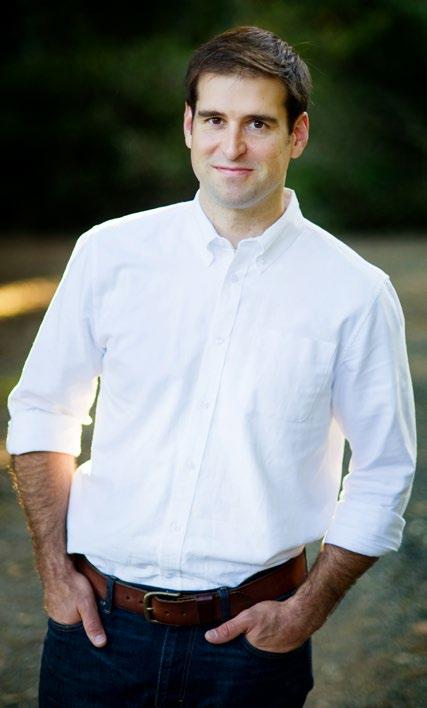
we will not even pull a gas line to the site. We will source only zero emission, clean energy (in) our innovative plant design,” the company states.
The Berkeley County campus location near the Charleston Port will open up the opportunity to export its battery components to other countries.
“A lot of European cell manufacturers are also sourcing all their components from Asia, so that could be an opportunity down the road, although there is so much demand right now in the U.S. that is our focus right now,” Georgeson said. “At the time that Redwood announced the company (and operations), it seemed like maybe this was a little bit early, but the reality is that this industry is going so quickly and there’s such demand for these components and, additionally, a need for these batteries to be recycled. So in some ways, we need to go even faster.”
26 www.scbizmag.com FOCUS
JB Straubel is the co-founder of Tesla and founder of Redwood Materials. (Photo/Provided)
Workers at Redwood Materials’ Nevada plant recycle battery components. (Photo/Redwood Materials)
PLUGGING INTO THE FUTURE
By Jason Thomas jthomas@scbiznews.com
The state of South Carolina has launched a virtual hub highlighting South Carolina’s growing electric vehicle industry and the state’s capacity for further industry expansion.

The website, scpowerserv.com, was created by the South Carolina Department of Commerce as outlined in Executive Order 2022-31, which Gov. Henry McMaster issued in October 2022, and provides a onestop-shop for the EV industry to learn how South Carolina is evolving the future by powering EV, according to a news release.
“EV-related companies account for more than half of the $10.27 billion in economic development South Carolina announced last year. That speaks to our state’s great potential to lead in this sector,” said McMaster in the release. “Our business-friendly climate and our greatest resource – our people – make South Carolina the place where the EV industry can transform the future. And this website will help us tell that story.”
The website includes four main sections to help prospective companies understand why the state’s strong advanced sector and reputation as an automotive powerhouse make South Carolina the place to establish or grow EV operations, the release stated. The sections include:
State Support – Contains information about McMaster’s commitment to ensuring South Carolina is prepared to meet the opportunities and needs in this time of great industry transformation.
Incentives – Explains the various incentives the state makes available to EV manufacturers, including information about workforce-related incentives and workforce training.
Plug into SC – Provides an interactive dashboard where users can view the number and location of public charging stations in South Carolina, available buildings and sites, an interactive map that shows the top 50 EV/automotive companies in the state by number of employees, and more.
News – Links to S.C. Commerce’s most recent press release announcements related to the state’s EV industry.
“As we work to ensure the state’s sustain-
able future by attracting companies that can create long-term opportunities for South Carolinians, scpowersev.com will help us expand our reach and show that we are the right fit,” said Secretary of Commerce Harry M. Lightsey III . “Gov. McMaster’s leadership and support in expanding this sector strengthens our ability to achieve continuing the releaseed EV success.”
The site also includes “Five reasons to make your EV in SC,” a short video showcasing original equipment manufacturers that are making or will make EVs in the state, access links to agency partners and the ability to contact the state’s EV Coordinator. The EV Coordinator is housed at S.C. Commerce and can connect interested companies and stakeholders with state agencies and other entities when they inquire about establishing or expanding operations in South Carolina
S.C. Commerce unveiled scpowersev. com during the second meeting of the Interagency EV Working Group, according to the release. As directed in the October executive order, the South Carolina Department of Transportation oversees the working group.
27 www.scbizmag.com
FOCUS
South Carolina launches electric vehicle industry website
Hall of Fame











2023 SOUTH CAROLINA BUSINESS
Sponsored by
The
Junior Achievement Finance Park Virtual computer simulation offers real-world situations to help students learn important financial skills.
SUPPORTING HEALTHY COMMUNITIES
BlueCross BlueShield of South Carolina has served the people of our state with care, commitment and compassion for over 75 years. We are dedicated to building stronger communities and helping them recognize their potential. Together, we can create a healthier future.
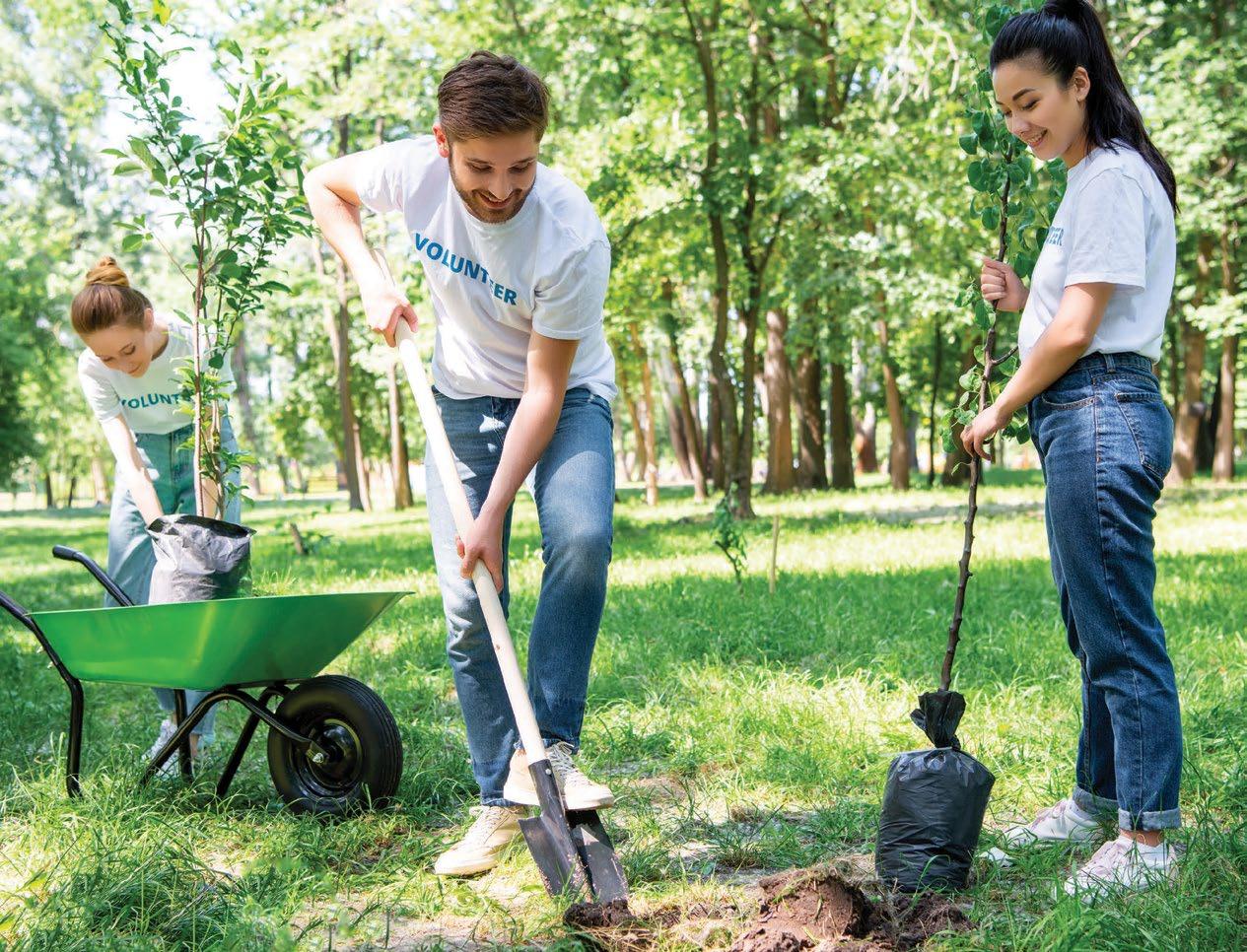 BlueCross BlueShield of South Carolina is an independent licensee of the Blue Cross Blue Shield Association.
BlueCross BlueShield of South Carolina is an independent licensee of the Blue Cross Blue Shield Association.
Dear Reader, W
elcome to the 2023 South Carolina Business Hall of Fame section of SCBIZ magazine. In partnership with Junior Achievement of Greater South Carolina, SC Biz News has published features on the winners of this prestigious award since 2016.
This year’s group, the 38th class since JA created the Hall of Fame in 1985, includes George Fennell, a Colleton County farm boy who built several multimillion-dollar businesses from the ground up; Stewart Spinks, a forward-thinking entrepreneur who was early to the game in the convenience-gas store business with a company that now boasts 80-plus locations; and Kim Wilkerson, a glass ceiling-shattering pioneer who built an impressive, influential career as a woman in the male-dominated finance industry.
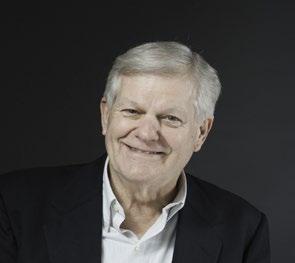
The business leaders honored here will be featured at a gala on March 9 at the Pastides Alumni Center in Columbia, and all have made significant, lasting contributions to the Palmetto State’s economic growth and well-being. Their names will join a list that includes South Carolinians from as far back as the mid-18th century to the present: Pinckney, Milliken, Koger, Detyens, Seibels, Sweringen and Kahn, to name just a few.
Junior Achievement continues into its second century of proudly helping young people learn the foundations of entrepreneurship and business success. The work is done by community volunteers in partnership with local schools to teach the programs offered by JA. Their contributions are vital to JA’s mission of preparing future generations of America’s business leaders and entrepreneurs.
SCBIZ Magazine is honored to be a part of the celebration of the great entrepreneurs and leaders who helped build what is a thriving, diverse and progressive state economy. Please join us in learning about and celebrating their contributions.
Steve McDaniel, Editor, Custom Publications Division
About the S.C. Business Hall of Fame
Each year, the South Carolina Business Hall of Fame honors leaders chosen for their unique contributions to South Carolina’s business landscape, for being agents of positive change, for their leadership, and for being a source of inspiration to the leaders of tomorrow. The Business Hall of Fame is presented by BlueCross BlueShield of South Carolina and Junior Achievement of Greater South Carolina. The Laureates for 2023 are George Fennell, Stewart Spinks and Kim Wilkerson.
Junior Achievement of Greater South Carolina

2711 Middleburg Drive, Suite 301
Columbia, SC 29204 | 803 252-1974
Bette Bronson, Vice President of Education
Ann Elliott, Director of Operations
Matt Morrison, Program Manager
Casey Pash, President and CEO

Susan Spencer, Development Director

30 www.scbizmag.com HALL OF FAME
Published by: www.scbiznews.com
George Fennell Page 34
Stewart Spinks Page 38 Kim Wilkerson Page 42
JA FINANCE PARK VIRTUAL TEACHES STUDENTS TO BE FINANCIALLY LITERATE
In the near future, every South Carolina high school student will be required to have one semester of personal finance, a core skillset that Junior Achievement has been teaching students in the state for over 55 years. It is a skillset that can help students financially succeed in the future and create

opportunities to build thriving communities in the state.
Junior Achievement has seen that teaching financial literacy empowers students to own their success in the future. One way Junior Achievement is working to teach students is by making sure they understand the reality of how finan-
cial decisions affect their life. Through JA Finance Park Virtual, JA is teaching middle school and high school students the skills to make financial decisions that result in future financial freedom.
JA Finance Park Virtual helps students build a foundation upon which they can make intelligent financial decisions

31 www.scbizmag.com HALL OF FAME
The JA Finance Park Virtual program on a student’s tablet computer.
Above,
that last a lifetime, including those related to income, expenses, savings and credit. The program comprises several teacher-led, in-class lessons and a variety of optional, extension activities. The experience culminates in a handson, online budgeting simulation that is supported by volunteers.
Through the simulation, each student chooses their future life by selecting a career and evaluating the cost for education needed and the financial outcome of the career decision. Once they have chosen their future career, they are given sal-


ary ranges and are able to go through how much they can afford for savings, housing, transportation, food, clothing, insurance, entertainment and future education.
The simulation also presents real-life financial roadblocks that cause the students to reevaluate their financial decisions. The student proceeds through three life stages: early years, mid-life years and retirement years. Through each stage, different financial scenarios are created to prepare the student with the tools to cover their financial life.
The future of South Carolina is
dependent on teaching students the skillsets they need for life. Businesses across South Carolina can also help in teaching personal finance to students by volunteering for the simulation with JA Finance Virtual. If companies in South Carolina want to help with this, they can reach out to the Junior Achievement office at 803-252-1974.
Together Junior Achievement and South Carolina businesses can help teach skillsets and mindsets to build thriving communities throughout South Carolina.
 the Junior Achievement Finance Park Virtual simulation lets students pick a digital version, or avatar, to represent themselves within the program. At right, students work on the app during classroom instruction. The program gives students the options of various career and educational scenarios and offers real-world situations to help them become more financially literate.
the Junior Achievement Finance Park Virtual simulation lets students pick a digital version, or avatar, to represent themselves within the program. At right, students work on the app during classroom instruction. The program gives students the options of various career and educational scenarios and offers real-world situations to help them become more financially literate.
HALL OF FAME 32 www.scbizmag.com



33 www.scbizmag.com HALL OF FAME
The Junior Achievement Finance Park Virtual computer simulation offers real-world situations to help students learn important financial skills.
A sample of screenshots from the JA Finance Virtual Park app.
George Fennell

When billionaire Wayne Huizenga called George Fennell, a country boy who grew up on a farm in Walterboro, it was a big deal. In fact, that’s what Huizenga, founder of AutoNation and Waste Management, and owner of Blockbuster Video, the Miami Dolphins and other sports franchises, was offering Fennell – a big deal.

Fennell rebuffed Huizenga’s offer to buy Fennell Container Company in 1995, telling him the company he had built from a few trash bins in Colleton County was not for sale. But he did accept a flight aboard Huizenga’s private jet to Miami to see a Dolphins game. And when Huizenga’s CFO called Fennell and offered numbers beyond Fennell’s imagination, he finally agreed to sell.

34 www.scbizmag.com HALL OF FAME
“The harder you work, the luckier you get. Some people look for the shortcut; there’s no shortcut in doing well.”
— George Fennell
A six-year noncompete clause kept Fennell out of the waste collection business but not out of business altogether. As he was transitioning out, he was offered an opportunity to purchase a hotel. He thought renting beds couldn’t be much different than renting Dumpsters, and so he bought in. Today his holdings have grown to real estate, hotel development and management, a landfill, recycling station and back into the waste business, with Carolina Waste and Recycling, which he opened with his son, Scott, in 2002 and built to the largest privately owned solid waste company in South Carolina.




Included in that list is Lowcountry Hotels, which consists of several iconic hotels, including the Ansonborough Inn, Hilton Garden Inn Charleston Airport & Convention Center, and DoubleTree by Hilton Charleston Convention Center. Fennell Holdings is also invested in downtown Charleston properties, including the Harborview Inn, the French Quarter Inn, and the Spectator Hotel.






35 www.scbizmag.com HALL OF FAME
for your induction into the SC Business Hall of Fame
George W. Fennell
George Fennel was born on a 70-acre farm in rural Colleton County and learned to work hard there. At 12 he was driving the family tractor even though he couldn’t reach the pedals. “I had to stand up to shift gears,” he remembered.

The farm included cattle, horses, corn, hay and lumber. It was young George’s job to feed the animals – seven days a week. To him, it wasn’t work; it was the part of his life he loved.
“I worked outside, that’s what I really, really enjoyed,” he said. “I enjoyed seeing the grass grow, the hay being bailed, the planting of corn, and cutting of corn, and carrying it to the mill and having it milled for feed for the cattle. I saw the cattle grow and we went to the stock market with the cattle and when they sold we saw the prices they brought, and it was an achievement from start to finish. I loved the process.”
Fennell’s father did backbreaking work day and night and wanted better for his son, so he packed him off to the University of Georgia and told him not to come back to the farm. George exited college with a wife, a degree and a job with Milliken & Co., the now-150-yearold textile manufacturer based in Spartanburg.
Having learned a wide range of business lessons, he was recruited to join Dayco Corp., an automotive and industrial equipment manufacturer, and establish a plant in Walterboro. At night, the enterprising young father of two was busy contracting with a few local companies to haul their waste. He eventually left Dayco – though they became one of his largest early customers – and jumped with both feet into the waste collection business. When it outgrew Walterboro, he moved it to the Charleston area and built the state’s largest privately owned waste company. (Yes, he did that twice in his career.)
Today Fennell Holdings Inc. is a diversified investment holding company specializing in hotels, waste management and aviation services with Scott serving as COO. Nearing 80, George Fennell has employed thousands of people and counts among his many blessings the opportunities to advance the careers of those around him. His biggest weakness in business, he says, was his loyalty to people. He acknowledges being slow to cut ties with employees who just didn’t fit, because he always worried what would happen to their families.
36 www.scbizmag.com
“I worked outside, that’s what I really, really enjoyed. I enjoyed seeing the grass grow, the hay being bailed, the planting of corn, and cutting of corn, and carrying it to the mill ...”
“ HALL OF FAME
— George Fennell on growing up on a farm
Even during the Great Recession and the COVID-19 shutdowns, Fennell’s hotels never laid anyone off or cut anyone’s pay. They kept employees whole until business picked back up.
Fennell says the values that propelled his business are simple, and easy for any company or business leader to adopt: Be honest, do what you say you’re going to do and treat people the way you want to be treated. Fennell paid his employees well and contributed to the communities in which he worked and lived, and was named Lowcountry Philanthropist of the Year in 2011.

For much of his career, Fennell has worked from dark to dark, just as his father did. He learned the lessons of hard work and integrity from his father and passed it along to his children. “The harder you work, the luckier you get,” he said. “Some people look for the shortcut; there’s no shortcut in doing well.”
It’s hard to imagine a South Carolina Business Hall of Fame without George Fennel, but Fennell himself, true to form and his salt-of-the-earth roots, is somewhat mystified by the recognition.
“That’s an honor and privilege and I’m thankful for it. So many other people in S.C. are well qualified, and I feel honored to be part of that group,” he said. “It’s been a good ride. It’s hard to look back and say, ‘What could I do different?’ I did my best all the way. The Lord was with me.”

37 www.scbizmag.com HALL OF FAME
Stewart Spinks

Stewart Spinks will be the first to acknowledge that he has this maddening need to detonate everything that’s working and change course. It can present a challenge to his business associates, including his son, Steve. But it is also the driving force behind his business success, as founder of Spinx service stations and accompanying convenience stores, now numbering more than 80 across the Carolinas.
Even today, the company namesake is pushing his sons and team members to jump into the electric vehicle market, against the advice of the financial people who tell him there’s no money to be made in it yet. Ever the disruptor, Spinks wants to leap at opportunities others may not see, innovate, differentiate, begin turning before the curve. That mindset has propelled him
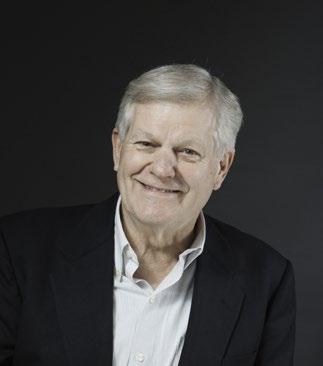
38 www.scbizmag.com HALL OF FAME
“I see opportunities – it’s a fault and it’s a blessing because you’re always wanting to change things.”
— Stewart Spinks
from a blue-collar childhood where one parent or another was always at work to industry royalty, and now, the S.C. Business Hall of Fame.


Spinks grew up in an Augusta, Ga., trailer park on the leading edge of the baby boom. His father worked as a mechanic by day and hospital orderly by night and his mother was a hostess at a hotel. He learned his relentless work ethic from them, and a bit about the tools and concepts related to how machines work. As an adult, he has developed a deep appreciation for the lessons his parents taught him about self-reliance, perseverance and love.
His parents encouraged him to excel in education while his coaches pushed him to maximize his potential on the ballfields. He combined the two with a football scholarship at the University of Tennessee, where he took courses in areas that involved human behavior. An advertising class that focused on Shell Oil’s marketing strategy particularly intrigued him, which came in handy when he went to work for Shell out of college in 1968.

39 www.scbizmag.com HALL OF FAME
At Shell, he was tasked with coaching service station owners on how to optimize their business practices and increase efficiency. In 1972, when the owner of the lowest-performing franchise in his territory decided to retire, Spinks bought the Greenville station. With a pair of small children to feed, Spinks continued to dress for work at Shell and waited a couple of weeks before informing his wife of his professional leap. She turned out to be his greatest asset, managing the home so that he could dedicate himself to business success.
Spinks saw the opportunity that was opening before him: the new concept of self-service. He recognized before most others that customers liked the speed and convenience of pumping their own gas and getting on with their day. Spinks worked 17 hours a day in those early days pumping gas and cleaning windshields – whatever was necessary to keep the operation afloat. Thanks to that ferocious effort and the selfserve pumps, the station flourished.
“I see opportunities – it’s a fault and it’s a blessing because you’re always wanting to change things. I realized that the gas business was about to be disrupted by self-serve. I fortunately was able to be in the right place at the right time in the oil industry to where there was a conversion, a disruption going on and so opportunities abounded that others were not as fast to respond to,” he said.
Spinks innovated again, selling everything from coffee to fried chicken in the convenience stores he built next to the service stations – a more common practice today. The concept spread to more stores to make Spinx a convenience retailing behemoth in the Palmetto State. Today, people


40 www.scbizmag.com HALL OF FAME
drive to Spinx stores to grab “fresh fast food,” including wings, wraps, breakfast sandwiches or their signature fried chicken – and maybe pump a couple of gallons while they’re there.
Stewart Spinks would be the first to tell you that the success of the company is not the work of one person. “There are so many others within this company that made it happen; I’m just the guy who got the ball rolling, and kept it rolling in tough times,” he said. Indeed, Spinks chuckles at his sub-optimal administrative abilities, preferring the customer-facing part of the business. For those areas in which he is less suited to lead, he has hired great talent and encouraged their excellence. Indeed, the company’s six stated core values are commitment to quality, accountability, customer focus, team orientation, passion and community.
In 2019 and again in 2022, the SPINX Company was named one of the Best Places to Work in South Carolina by SC Biz News in partnership with the South Carolina Chamber of Commerce and Best Companies Group.

Stewart Spinks recognizes the role of luck in his life. “You’ll hear me say the words fortunate and blessed a lot,” he told the Greenville Journal. He has spent his career sharing his good fortune – first with his 1,800 associates and then with the communities in which he operates. Spinks and his wife, Martha, were recognized as Individual Philanthropists of the Year by the Association for Fundraising Professionals in 2019. The Spinkses have supported a host of local charities and founded their own foundation focusing on growing healthy, educated children. For his dedication to business and community success, Spinks earned the Order of the Palmetto, the state’s highest honor, in 2022, the company’s 50th anniversary.
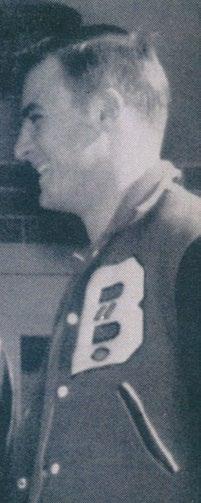

“If you’ve got aplenty, you share it,” Stewart Spinks said.

Today in his 70s, Stewart has left the company in the hands of his eldest son, who serves as CEO and deftly entertains his dad’s big, disruptive ideas without disrupting the smooth operation of the business. In a fit of understatement, Steve told Convenience Store News that his father is “a little restless with keeping things the way they are.”

41 www.scbizmag.com HALL OF FAME
I realized that the gas business was about to be disrupted by self-serve. I fortunately was able to be in the right place at the right time in the oil industry ...”
“
— Stewart Spinks
Kim Wilkerson
As a young banker working in the credit department at Banker’s Trust of South Carolina, Kim Wilkerson rejected a loan request from a company that lacked sufficient cash flow. Her call to the senior vice president who had booked the business did not go well and she went home that night convinced she was going to be fired.
She was even more convinced of her fate the next morning when her boss met her at the door and beckoned her into an empty office. But instead of a pink slip, Wilkerson got a lesson in teamwork. He offered her support, saying she had done the right thing. But he asked that in the future she alert him when a senior VP’s client was being rejected. It was her first tutorial in having each other’s backs.
Being a woman in banking – in South Carolina – Kim Wilkerson is no


42 www.scbizmag.com
HALL OF FAME

stranger to firsts. Notably, she was the first female board chair in the 135-year history of her alma mater, Clemson University, and the first state president at Bank of America, the successor to Banker’s Trust, in the state of South Carolina.
Wilkerson’s rise, from loveaddled college girl to Hall of Fame businessperson, is marked by repeated instances of support and mentorship from others, returning the favor to those behind her, family sacrifices and collaboration, and lots of hard work.

Wilkerson grew up in Cayce, to parents who led her to believe there was nothing she couldn’t do simply because of her gender. They taught her “to love really, really big” and to appreciate the value of education, and so she planned to head off to the Univer sity of Tennessee to be an engineer, just like her daddy did.

But fate had other ideas. It put a handsome young football player in her path and when he ma
triculated at Newberry College, she headed to Clemson to be close by. That relationship has thrived through 42 years of marriage, two children, three grandchildren, her husband’s 18 years as mayor of Cayce, and, on Tuesday, March 14, 2023 –Wilkerson’s 65th birthday – her retirement.
“People said you can’t retire on a Tuesday. I think this is a great birthday present,” she said.
Upon graduation from college in 1980, Wilkerson interviewed with what was then the Big 8 accounting firms. Her professor, Perry Woodside, suggested she consider other pursuits.
“He came to me and he said, ‘Kim, you are going to be a perfectly miserable accountant. They are going to park you in a conference room for five years auditing financials and you are going to be miserable. Have you ever considered banking?’ And I said ‘No, I’ve never considered banking,’ and he said ‘Well now you have and I’ve scheduled you for two interviews next week,’” she recalled. The decision to become a banker, not an accountant, changed her life. “I was very lucky to join
44 www.scbizmag.com
a bank that was about diversity and inclusion before diversity and inclusion were talked about,” she said gratefully. Her first bank president was South Carolina Business Hall of Fame laureate Hootie Johnson – “an amazing man,” she said – best known as the chair of Augusta National, home of the Masters golf tournament.

One example of the bank’s progressive thought process was the turning point in Wilkerson’s career. Struggling to juggle raising two very young children with her highly demanding full-time job, Wilkerson resigned from her promising career at the bank at the age of 35. Bank leaders responded by moving up the roll-out of a program they called Select Time that would allow young parents to work until 2 p.m. and be home when their children got out of school. It benefited everyone involved. Wilkerson worked for 10 years under Select Time and it never restrained her ambitions. Moreover, clients, whom she feared might chafe at her hours, were instead surprisingly supportive.

45 www.scbizmag.com HALL OF FAME
Later, as state president of Bank of America, Wilkerson instituted paternity leave, against the advice of those who argued men would not interrupt their careers. Instead, men embraced the opportunity. “Just because it may be a little different from what was done in the past doesn’t make it something you should be hesitant about,” she said.
As a pioneer in banking, Wilkerson has had the pleasure of passing along the gift of support and confidence that others offered her. “I think about how incredible it is today that women coming along in their careers now have the opportunities to do anything. I look at my daughters-in-law and my granddaughter and the world is their stage,” she said.

Wilkerson has earned a slew of honors over her career, including Business Leader of the Year by the South Carolina Chamber, Leader of Distinction Award by Leadership South Carolina, and the Distinguished Service Award by the Clemson Alumni Association. Wendy York, dean of the business school at Clemson, told Clemson News that Wilkerson’s greatest asset is her selflessness.

“Kim is … an authentic leader who is very comfortable with the power that she earned, and classy about how she exercises that leadership. Kim is inclusive in that she’s not threatened by others in power and is the kind of leader people want to follow. I’ve witnessed her generous spirit in a number of ways, one being how she quietly opens doors for others to succeed.”
For the generation now entering the workplace as she exits, Wilkerson recommends they become voracious learners and embrace change. And she counsels them to face today’s nanosecondworld with uncommon patience.
As for Hall of Fame status, Wilkerson is characteristically humble and appreciative to those who mentored and supported her. “I am completely overwhelmed. When told about my selection all I could think was that little girl from Cayce, S.C., could never have dreamed of this,” she said while clutching her hands to her heart.
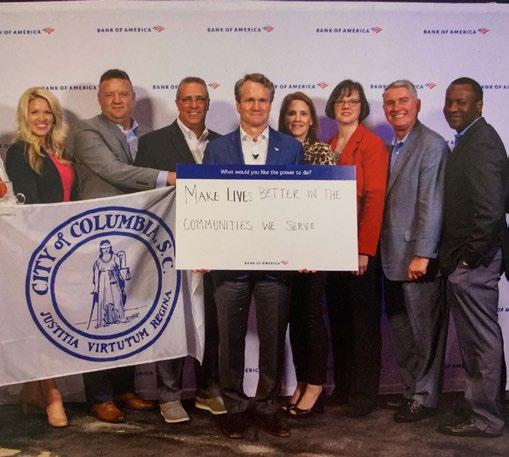
46 www.scbizmag.com HALL OF FAME
HEAVY LIFTING
South Carolina Ports had a record 2022 with the most containers ever handled at the Port of Charleston.
SC Ports moved nearly 2.8 million TEUs (twenty-foot equivalent units) in 2022, a 1.5% increase over 2021, according to a news release from SC Ports. When accounting for containers of any size, SC Ports moved more than 1.5 million pier containers in 2022, a 1% increase from 2021.
“South Carolina’s excellent port team and maritime community efficiently handled record cargo volumes and expertly navigated supply chain challenges to keep freight moving for our customers,” SC Ports President and CEO Barbara Melvin said in the release.
With the resumption of cruises, SC Ports had 261,636 cruise pas-
South Carolina Ports experiences record

sengers come through the Passenger Terminal last year, according to the release.
SC Ports moved 199,343 vehicles across the docks of Columbus Street Terminal in 2022, further connecting South Carolina’s automakers with global consumers, the release stated.
Inland Port Greer and Inland Port Dillon handled a combined 167,147 rail moves in 2022, enabling more companies throughout the Southeast to quickly move goods to and from the port via rail, according to the release.
“South Carolina Ports serves as South Carolina’s gateway to the world, giving companies direct access to global markets,” Melvin said. “We proudly move goods for advanced manufacturers, retailers, farmers, medical providers, gro-
2022

cery stores, solar panel producers and small businesses, helping to support 225,000 jobs in South Carolina.”
Booming business in SC
South Carolina’s economy is booming as companies make big investments to expand operations and open new facilities to take advantage of the state’s strong business climate, excellent workforce, expansive infrastructure network and world-class port, the release stated.
“South Carolina’s booming economy is breaking records left and right because of the communication, collaboration and cooperation among our unmatched strategic assets, including the South Carolina Ports Authority,” South Carolina Gov. Henry McMaster said in
47 www.scbizmag.com
SC DELIVERS
SC Ports
the release. “Our ports’ success creates prosperity, growth and opportunity for South Carolinians, which means today’s announcement is a sign of more good things to come.”
In 2022, the South Carolina Department of Commerce secured more than $10 billion in total capital investment from companies establishing or expanding operations in South Carolina. This record investment amount represents 120 projects and more than 14,000 announced new jobs, according to the release.
“South Carolina is experiencing unprecedented economic development growth as domestic and international companies, alike, recognize the long-term potential within our borders,” Secretary of Commerce
Harry M. Lightsey III. “The South Carolina Department of Commerce is proud to collaborate with allied partners and state leadership to prioritize strategic infrastructure investments that help existing and future industry realize that success and maximize efficiencies while creating opportunities for all South Carolinians.”
Many of these economic development wins are port-dependent businesses that rely on SC Ports to import goods for production and export products for overseas consumption.
“Major business announcements and expansions are happening in South Carolina, and we have strategically invested in critical port infrastructure to support the growth occurring today and into the future,” SC Ports Board Chairman Bill Stern said in the release.
Strong infrastructure in SC
With great support from the state, SC Ports has invested more than $2 billion into port infrastructure in recent years to support the state’s booming business sector, the release stated. Combined with port funding and state funding, SC Ports plans to spend an additional $2.5 billion over the next decade.
Investments thus far have yielded modernized container terminals with ample capacity, the deepest harbor on the East Coast at 52 feet and a strong rail-served inland port network, the release stated.
Construction is now underway on SC Ports’ Navy Base Intermodal Facility, a modern cargo yard in North Charleston that will by railserved by CSX, Norfolk Southern and Palmetto Railways. Creating near-dock rail at the Port of Charleston will make South Carolina more competitive as an import gateway to the United States.
SC Ports is also developing an inner-harbor barge operation to support the Navy Base Intermodal Facility; it will transport cargo between container terminals via water.
The SC Legislature and McMaster allocated $550 million to build the rail yard and barge operation.
“With critical support from our state leaders, SC Ports is boldly investing in port infrastructure to ensure port-dependent businesses can thrive in South Carolina,” Melvin said.
Beyond the port, containers need to move fluidly on highways to reach their destinations — whether that may be a rail yard, manufacturing facility, import distribution center, retail store or a resident’s doorstep, the release stated.
Critical infrastructure investments are happening around the state to support the state’s supply chains. The South Carolina Department of Transportation has significantly increased investments to the state’s transportation network, spending nearly $4 billion in construction contracts in 2022, according to the release.
“We know how important it is to our thriving economy to ensure that goods can move efficiently across the state and region,” SC Department of Transportation Secretary Christy Hall said in the release. “With the support of the Governor and the General Assembly, the South Carolina Department of Transportation has made unprecedented investment in our state’s infrastructure system since 2017. This work includes more than 100 miles of interstate work either complete or underway, improving our critical freight corridors and making good on our promises to the people of South Carolina.” Staff report
SC DELIVERS 48 www.scbizmag.com
South Carolina’s booming economy is breaking records left and right because of the communication, collaboration and cooperation among our unmatched strategic assets.”
“
— Gov. Henry McMaster

49 www.scbizmag.com THE po wer lis t INFORMATION TECHNOLOGY To view the full Power List profiles, visit www.scbiznews.com
ANDREW KURTZ
Title: CEO
Company: Kopis
Years in the IT industry: 30
How can businesses/organizations best improve their growth potential?
We are big believers in the “crawl, walk, run” theory. Sometimes a whiteboard, notebook or spreadsheet can be used to prove a new process or model with little to no investment. From there, look to see if there are low cost extensions, pre-built customizations to products you already use or low-code/no-code ways to take the next step. For many solutions, getting to this “walk” point is all that is needed. In cases a more robust solutions are needed, the first question is build vs. buy – buy when you can, but don’t align your business to software, find software that aligns to your business.
Your advice to a CIO at an SMB?
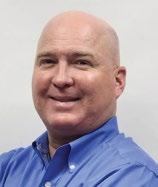


Focus on the 20% of what you can control that will make 80% of the impact. We have seen far too many initiatives drag on trying to get too deep/detailed when other areas are failing. Making the biggest impact can only happen by spending the time to properly plan/prepare and determine where resources are best spent to impact the business.
What is your favorite technological gadget?
I have a Garmin Venu 2S watch that I can’t live without at this point. Accurate heart rate, SpO2 and sleep tracking have been life altering and opened my eyes to some areas of health to address.
WILLIAM S. HELMLY
Title: President and CEO
Company: Home Telecom
Years in the IT industry: 30
What is the one thing every business/organization must do from an IT perspective?
One, is to have a great partner that delivers a reliable internet connection with the bandwidth required to handle the needs of your business over a reliable, secure network. Two, is to keep Cybersecurity top of mind due to the level of threats that exist today. Three, is to always keep customer satisfaction in clear view to ensure while you are working to improve technology for your business you do not unintentionally disrupt the customer’s experience.
Finish this sentence: Robots will… enhance, but never replace, a truly exceptional customer service experience.
What is your favorite technological gadget (smartphones not included), and why?
For me, it is home automation. Being a fairly simple person, I never automate for the sake of automation. But, traveling between multiple locations frequently, automation allows me to check in on remote sites by turning on or off lights, locking or unlocking doors, adjusting thermostats, arming or disarming security systems all from an app on my Wi-Fi enabled phone or tablet. This convenience has saved me many unnecessary trips while giving me piece of mind.
BEN CASH
Title: CEO Company: Reason One
Years in the IT industry: 25
What is the one thing every business/organization must do from an IT perspective?


One thing that doesn’t get talked about enough is the carbon footprint of our digital properties and IT infrastructure. Measured by carbon impact, the internet is the sixth largest country in the world, so although “paperless” is the future, it’s not without drawbacks.
Another thing we can do is ensure diversity on your IT teams. In the US, Black tech workers make up just 7% of the workforce, and are historically underpaid. This is unacceptable. We’re working to close that gap through the Reason One Mentorship & Scholarship program, which awards $5,000 scholarships plus one year of professional development and mentorship to three Black tech students in South Carolina and Ontario.
However, to truly make a change, it takes a commitment on behalf of the larger tech community to support, hire, and fairly pay Black people in tech.
Finish this sentence: Robots will…
Reduce the cognitive load on humans so we can focus on our most creative, most valuable, most world-changing ideas. For instance, if ChatGPT can write your proposals, then the empathetic, creative humans can focus on breakthrough solutions.
BILLY ROGERS
Title: President and chief operating o icer Company: TELECO, Inc.
Years in the IT industry: 30
How can businesses/organizations use virtual and augmented reality to their advantage?
I can see companies utilizing virtual reality to implement training programs for their employees, and augmented reality could be used by companies to allow clients to “see” products in use through their smart devices. I have personally used AR when buying furniture, and allowing us to “see” a piece of furniture in place at our home provides us a better buying experience. I believe VR & AR will increase in popularity among businesses to provide their employees and customers with enhanced experiences over the coming years.
What is your favorite technological gadget (smartphones not included), and why? My favorite technological gadget is my Oculus/ meta Quest 2. It allows me to explore in ways people have dreamed about, without having to leave my living room. If I want to go to the top of the Empire State Building, or visit the Great Wall, or even swim with sharks, I can do it all.
And when I am at the top of a building looking down and I get weak in the knees, I still shake my head at the technology and how it makes you feel when it isn’t actually real.
50 www.scbizmag.com
CALLING ALL HIGH-GROWTH COMPANIES!
Is your company one of the top high-growth companies in the state? Let’s find out! Winner rankings will be revealed during a fast-paced countdown celebration in Columbia. The top 20 small and top 20 large companies will be profiled in SCBIZ Magazine.








Nominate today: bit.ly/scbizr20noms





























Self-nominations are encouraged! Nominations close on March 27, 2023 at 5:00 p.m.
Hosted by:




Presented By:
For sponsorship information, contact Ryan Downing at rdowning@scbiznews.com. #R20SC

2023
2023
BRADDOCK CUNNINGHAM
Title: President Company: Broadband Infrastructure Inc
Years in the IT industry: 26; founded first tech company in 1997
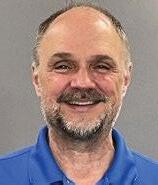


How can businesses/organizations best harness artificial intelligence in 2023?
AI can be most useful across nearly any business in two ways –identifying and winning new customers and customer retention. Utilizing AI tools to speed up, streamline and deepen business development activities. By uncovering opportunities earlier in the process as well as discovering opportunities that may have been entirely missed without AI would help propel any business forward.
Additionally important, retaining customers by utilizing AI to identify trends and activities across the entire customer base in order to determine why some customers move on, why some are not as profitable and what are the key items that keep customers long term.
What is the one thing every business/organization must do from an IT perspective?
If I had to select only one thing, most people may say security, but in my 26 years in the IT world, integration is they key. Even in 2023, most people would be shocked at how many companies operate on disparate systems, using antiquated technologies and techniques to transfer information, all of which slows their business down and opens up security risks.
JOHN STARMACK, JR.

Title: Chief Executive O icer
Company: TM Floyd & Co.
Years in the IT industry: 34
How can businesses/organizations best harness artificial intelligence in 2023?
Businesses of all types in all industries are now accumulating large amounts of data about their operations. In 2023, artificial intelligence can assist with transforming this data into meaningful information that can be used for more informed decisionmaking at nearly every level of an organization.
What is the one thing every business/organization must do from an IT perspective?
As every organization evolves by responding to an ever-changing business environment, the IT infrastructure, applications, and data integration should evolve as an inherent part of the operations. IT requires maintenance and nurturing in the same manner as your car to make sure it keeps meeting your needs. Just like good mechanics provide outside and independent services for your car, consultants do the same for business operations and IT.
You can’t neglect your car for years and expect it to still run nor can you replace it with every new model that hits the market. IT is the same and just like your car, it is not only important to maintain it while you are using it but also to evaluate if it is still meeting your needs.
DAVID CARSON
Title: President Company: Plus Inc
Years in the IT industry: 43
How can businesses/organizations best harness artificial intelligence in 2023?
From an IT standpoint you would use cybersecurity software to watch your systems for you.
What is the one thing every business/organization must do from an IT perspective?
Take a layered approach to cybersecurity. Use multiple platforms to protect yourselves. Don’t use the same brand for all your cybersecurity. We recommend different brands for Antivirus/Backup/Firewalls/ etc. We have seen platforms like Solarwinds and Kaseya get attacked and affect all their clients and shut down everything.
Finish this sentence: Robots will… Be smarter than we are.
What is your favorite technological gadget (smartphones not included), and why?
Night Vision and IR Flashlights. It’s completely outside of the IT services we provide but I love hiking the wilderness and its so awesome to be able to take the night darkness and be able to see like its daytime.
KEVIN T. HART
Title: Chief Executive O icer Company: Segra
Years in the IT industry: 30-plus
What is the one thing every business/ organization must do from an IT perspective?

Organizations need to rethink their cybersecurity to ensure they can collect, correlate and analyze security information from all IT systems and networks, enabling rapid detection and remediation. Having several services catered to security such as hosted firewall, Security Operations Center as a Service (SOCaaS), and Distributed Denial-ofService (DDoS) protection can help keep businesses connected and secure while guarding against cyberattacks and network outages.
Cloud-based services allow businesses to replace costly hardware investments and companies should find a cloud service provider that can offer the ability to customize and package services while improving efficiency and reducing costs.
Outsourcing a security operations center can simplify the need for expertise, resources and future exposure possibilities. Having a Security Incident and Event Management platform and an expert-staffed team can help actively monitor devices on the network edge increasingly exposed by cybercriminals getting through traditional obstacles like firewalls and antivirus software.
Colocation also takes the worry out of managing a facility, or its security.
52 www.scbizmag.com
EV manufacturer expands again
Bintelli LLC more than doubles Charleston space with expansion
By Ross Norton rnorton@scbiznews.com
ACharleston-based manufacturer of electric vehicles and golf carts has expanded for the third time in three years.

Bintelli LLC more than doubled its space, going from 65,000 square feet to 174,000 square feet, making room for growing demand for its products and the employees needed to fill that demand.
A company spokesperson said Bintelli started 2021 with 24 employees and started 2022 with 52 before closing the year with 102. The company added eight more workers in last month and expect to add at least 20 more by the end of the year, he said.
“It’s no secret that every move we make is to continue to deliver on having the best program possible,” Jason Perske, vice president of Bintelli, said in a news release. “This expansion is another step in solidifying ourselves at the forefront of the industry. While faster order fulfillment and greater inventory availability is going to be an incredible asset for our dealer family, I’m far more excited about what this means for the additional levels of support we can offer. I’m excited for all of our dealerships to share in this huge announcement and incredibly thankful for all the support they show us every day. We wouldn’t be here without them.”
The company has tripled the size of its dealer network in the last year, accounting for some of the rise in demand. Its product also was ranked by Golf Cart Resource as 2022’s Best Low-Speed Vehicle and Best StreetLegal Golf Cart in a consumer poll.
“This new facility is a testament to the amazing work our dealer family has done over the last few years,” Bintelli founder and President Justin Jackrel said in the release. “As we are now operational in what I believe is the largest LSV manufacturing facility in America, we’re going to be able to even better support our dealer family with the additional vehicles, parts and support they need to continue their rapid growth nationwide.”
In addition to the recent facility expansions, Bintelli has also put a major focus on expanding its support and production staff to better assist its dealer network, the release stated. Over the last 12 months, its dealer support team has increased by 500% which has rapidly decreased average delivery time for parts shipments and decreased response and wait times for dealership needs. Focusing on more than just the sale of vehicles, Bintelli has tripled the size of its parts and after-sale service department.
“What an amazing feeling to finally move into our new home,” Kevin Marques, Bintelli’s facility manager, said in the release. “This facility is like no other — massive is an understatement. We couldn’t have done this without the hard work and dedication of our staff and all their efforts to make this a smooth transition. I’m thrilled to see the success and impact we will have on the EV community with our new home.”
“It is a great feeling being a Bintelli dealer knowing that we have the support, commitment and communication from the brand and employees at the corporate office,” Tom McMenanin, president of Toms River Auto Group, said in the release. “There is not a question that doesn’t get answered, a call that doesn’t get a returned call, or an email that doesn’t get a reply. If you are a new dealer coming in to the Bintelli family you will be able to hold your head up high representing the Bintelli brand.”
53 www.scbizmag.com
Bintelli LLC, a manufacturer of electric vehicles and golf carts, is expanding its Charleston operations for the third time in three years, going from 65,000 square feet to 174,000. (Photo/Provided)
Mark Farris 5 QUESTIONS WITH…
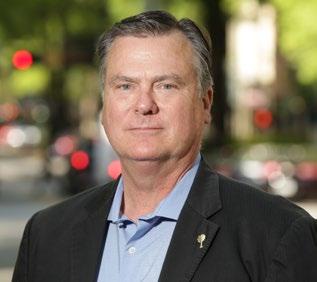
What economic impact does the Upstate see from the auto industry, and how does it benefit residents?
It’s impossible to overstate what the automotive industry has meant to all of SC. Michelin’s decision in 1973 to locate its first tire manufacturing operation and later its North American corporate headquarters in Greenville is the genesis of the industry. Over 5% of the state’s entire workforce is now dedicated to automotive manufacturing and assembly. OEMs like Daimler, Volvo and BMW are only a small part of direct impact, as over 250 Tier I, II and III suppliers account for over $27 billion of SC’s economy. GADC works to make Greenville County and the Upstate the location of choice as automotive transitions to the mobility industry. Recent announcements like Dash EV, along with assets including the International Transportation Innovation Center at SC TAC and CU-ICAR, position us to benefit as the industry evolves. From being the top exporter of tires and passenger vehicles in the US to having over 87,000 employees, the auto industry’s impact on our state is massive.
What steps are being taken to ensure that the Upstate is prepared to fill the influx of advanced manufacturing jobs entering the region due to the EV battery boom?
I am excited to see how every area in the Upstate has embraced the challenge in workforce preparedness. Pioneers include Greenwood and Oconee, which long ago implemented advanced manufacturing training programs to address industry concern about worker skills. And I’m proud of the cooperative relationships between Greenville County School District, Greenville Technical College and Clemson University. From AI software to lithium-ion and lithium polymer batteries, companies are scrambling to grab market share as the transition from internal combustion engines becomes inevitable. The sooner we improve worker skills to meet this transition, the more investment and job creation will follow.
South Carolina is becoming known as the “Battery Belt” for its electric vehicle battery manufacturing presence. How does the Upstate figure into this?
The term “gigafactory” has become a generic term for companies involved in electrification of the automobile. The announcement of Blue Oval City in TN and Toyota’s new plant in NC were the two largest in the Southeast until Florence County announced Envision AESC — followed by Berkley County’s Redwood Materials. These companies represent billions in new capital and helped SC attain its largest ever investment total in 2022 at $10 billion. There are dozens of these facilities still in
search mode across the Southeast, promising opportunity to attract battery production facilities as well as to the myriad of other parts and devices needed for electric vehicles.
Places like Woodruff are about to see large-scale change with Envision AESC’s $700M plant being built there. How do you marry the Upstate’s laidback charm with rapid development?
Because of its location, proactive local government and affordable housing, Woodruff was growing by leaps and bounds BEFORE Envision AESC’s announcement. Like many familiar with the town’s textile history, it might be difficult to reconcile the coming development with the recent past. I think of communities like Seneca, Gaffney, Easley and Laurens which will soon be inundated with new growth challenges and opportunities that follow. The rapid physical changes to our landscape certainly stand in conflict with the disdain many of us Southerners feel for change. Yet we have learned that change can mean a better quality of life. And if we are thoughtful about growth, we can retain the character of our communities.
If you could take a potential investor one place to showcase the Upstate, where would it be, and why?
Today, availability of skilled labor has become the biggest concern of prospects. So a tour down Millennium Boulevard is my choice to showcase the Upstate. Starting with Dr. Phinnize J. Fisher Middle School, we explain to companies that our local school system — including A.J. Whittenberg Elementary, Fisher Middle and most recently the new Fountain Inn High School — gives students exposure to a STEM curriculum throughout their education and encourages them to consider technology-intensive training. Near Fisher Middle is Greenville Tech’s Center for Manufacturing Innovation. With advanced training like additive manufacturing with 3-D printing and learning labs for industry 4.0, sophisticated manufacturing prospects are in awe of the training being done at CMI. Just down Millennium Boulevard is the 250-acre campus of Clemson University’s International Center for Automotive Research. Home to the nation’s only graduate department of automotive engineering, the impressive talent there proves Greenville can satisfy the employment needs of even the most advanced automotive and mobility industry. And while each facility is important in its own right, they showcase the community’s cooperation, commitment and ability to partner.
Mark Farris is president and CEO of the Greenville Area Development Corp. For more information visit greenvilleeconomicdevelopment.com.
54 www.scbizmag.com EXECUTIVE INSIDER
RESERVE YOUR BOOTH TODAY: northcharlestonexpo.com


MAY 23, 2023 | 9AM-4PM
CHARLESTON AREA CONVENTION CENTER
This must-attend event showcases the Lowcountry’s most dynamic businesses on an exciting, interactive show floor. Connect with local professionals, create new relationships and discover new resources for business growth.






• Contacts to Contracts

• Career Opportunity Center
• Nonprofit Pavilion
• Happy Hour Networking Reception
• Kickoff Breakfast: Supply Chain Panel

• Power Lunch
#nchsxpo
HOSTED BY: EVENT PARTNERS: EXPO SPONSORS:
For more information, contact Kim McManus at 843.849.3116 or kmcmanus@scbiznews.com.
We start with the best customer service team in Charleston. Then our dispatchers and drivers go to work to deliver. No lane too short or too long.
If your current carrier drops the ball back in your lap, call All Points.
HAZ-MAT Carrier | Refrigerated Carrier | Overweight Carrier | Customs Bonded Carrier
We are conveniently located near I-526 at Virginia Avenue which is: 1.5 miles from North Charleston Terminal.
11 miles from Wando Welch Terminal.
4.5 miles from CSX Rail.
5.5 miles from Norfolk Southern Rail.
•We deliver across the street, across the state, or across the country.
•Highly trained drivers are all TWIC certified.
•Most drivers are HAZ-MAT and tank certified.
•Our trucks are permitted for heavy haul in SC, NC, and GA.


•We own chassis; 20’ tri-axles, 40’ tri-axles, and 20’ and 40’ chassis’.
•EDI capabilities.
•Three acres of storage.
•Specialized in recovering and delivering.
843-576-5930 1040 Lincoln Avenue
North Charleston,
29405 www.AllPointsCharlestonSC.com | ASC@AllPointsTransport.com
|
SC
































































































































 By Christina Lee Knauss cknauss@scbiznews.com
By Christina Lee Knauss cknauss@scbiznews.com







 By Krys Merryman kmerryman@scbiznews.com
By Krys Merryman kmerryman@scbiznews.com

































































































 BlueCross BlueShield of South Carolina is an independent licensee of the Blue Cross Blue Shield Association.
BlueCross BlueShield of South Carolina is an independent licensee of the Blue Cross Blue Shield Association.








 the Junior Achievement Finance Park Virtual simulation lets students pick a digital version, or avatar, to represent themselves within the program. At right, students work on the app during classroom instruction. The program gives students the options of various career and educational scenarios and offers real-world situations to help them become more financially literate.
the Junior Achievement Finance Park Virtual simulation lets students pick a digital version, or avatar, to represent themselves within the program. At right, students work on the app during classroom instruction. The program gives students the options of various career and educational scenarios and offers real-world situations to help them become more financially literate.










































































































